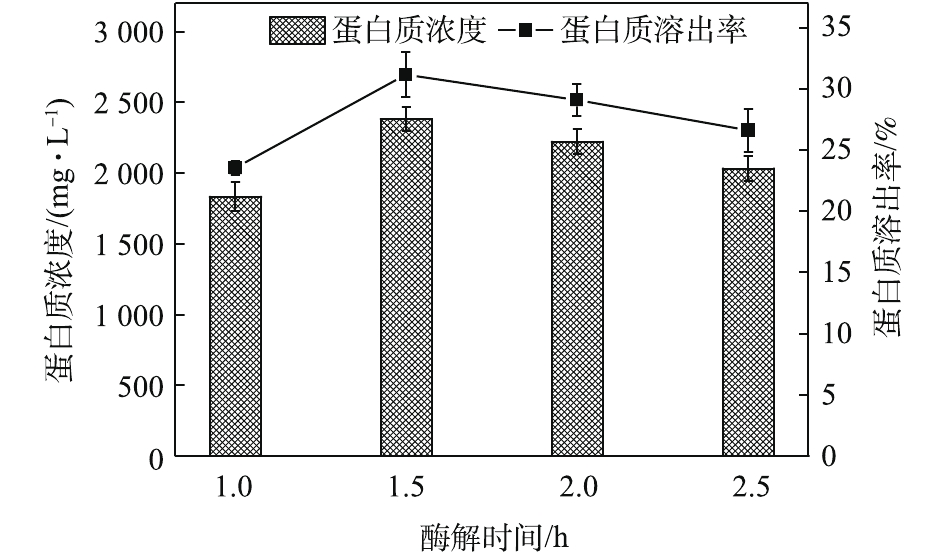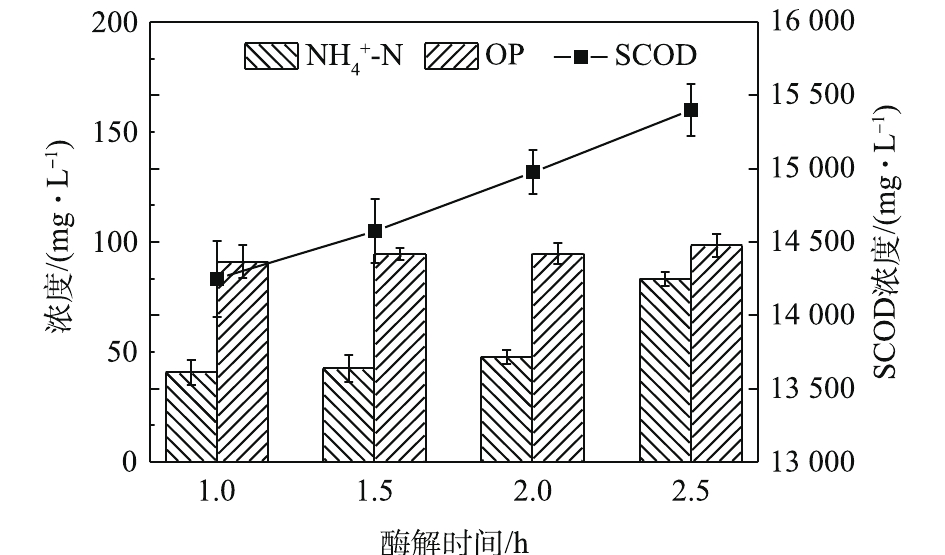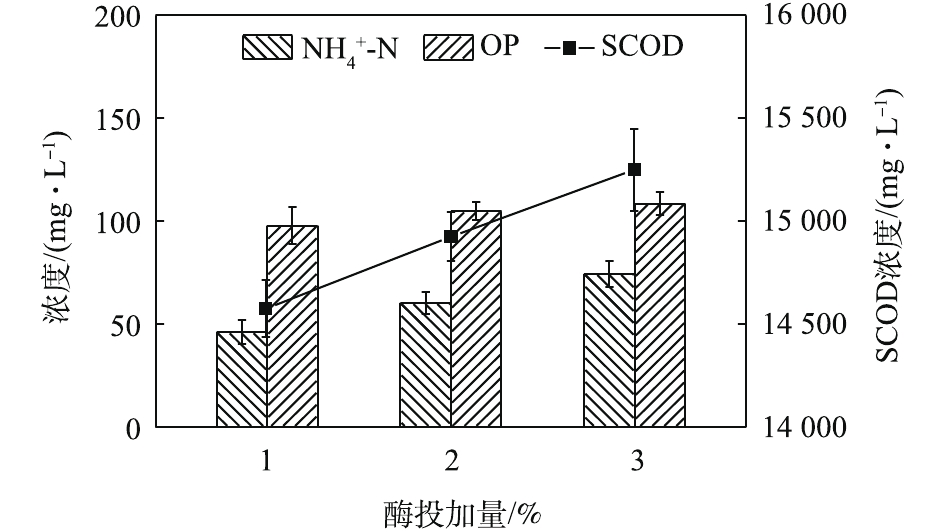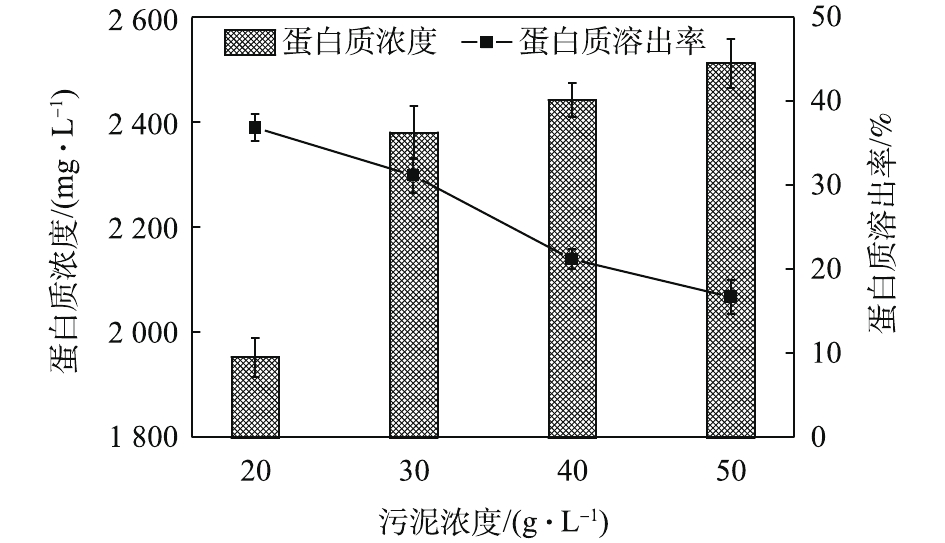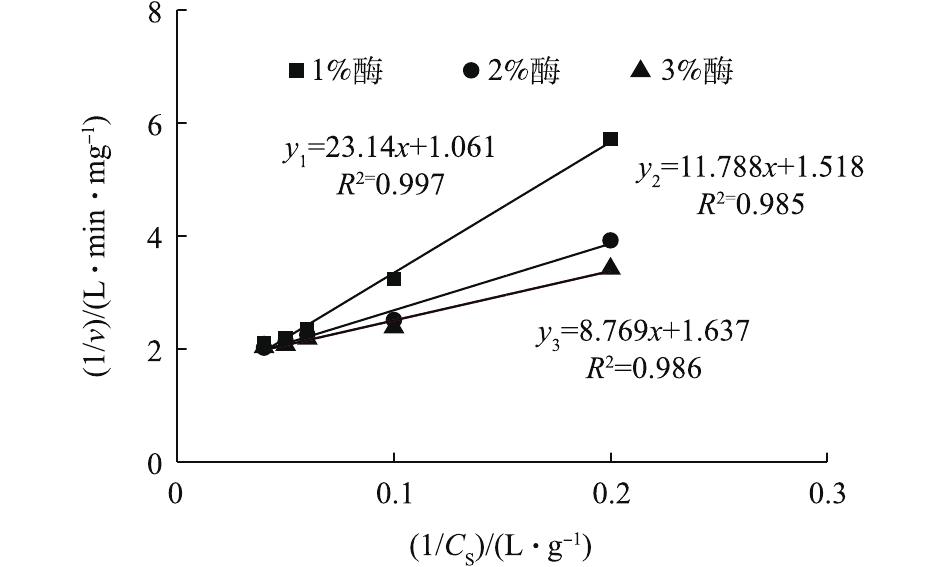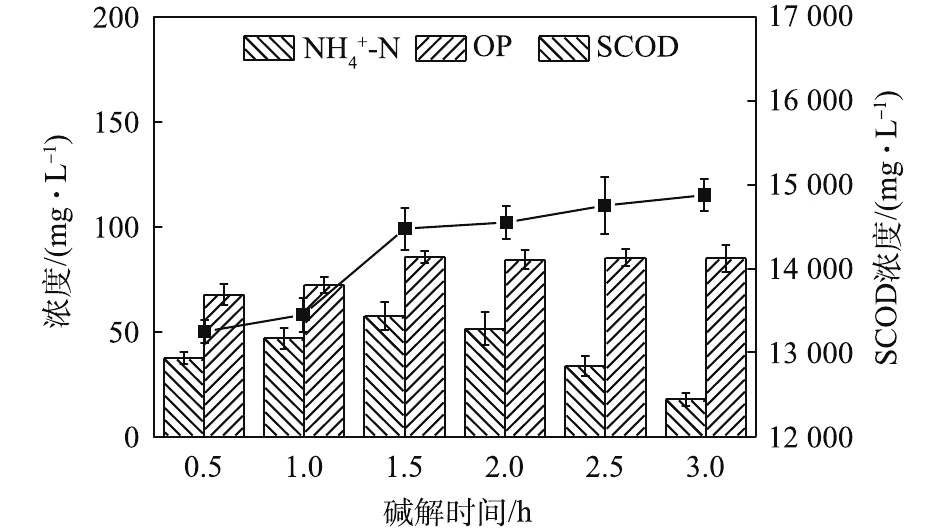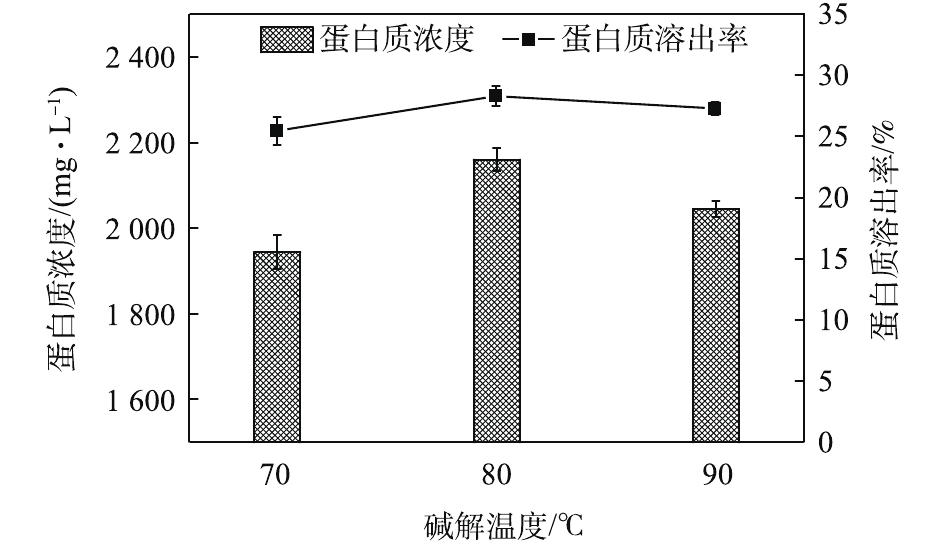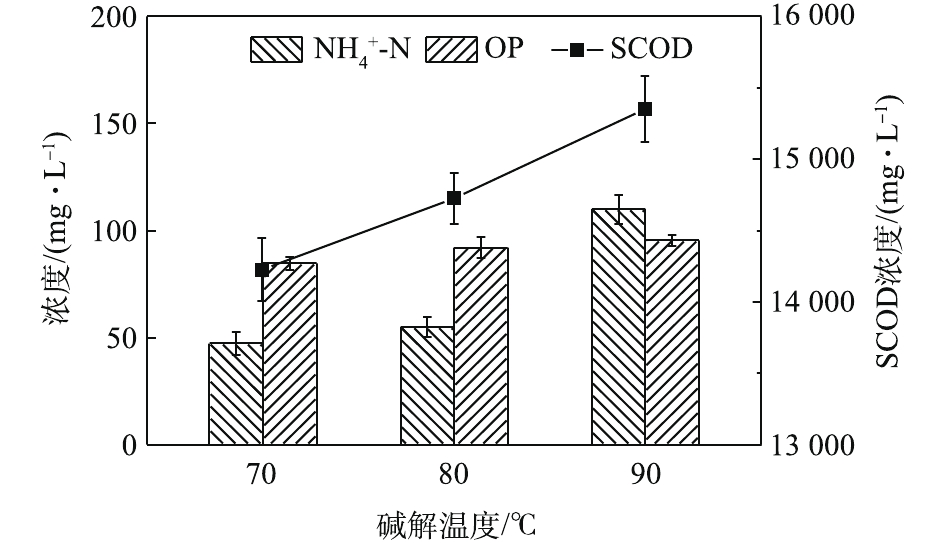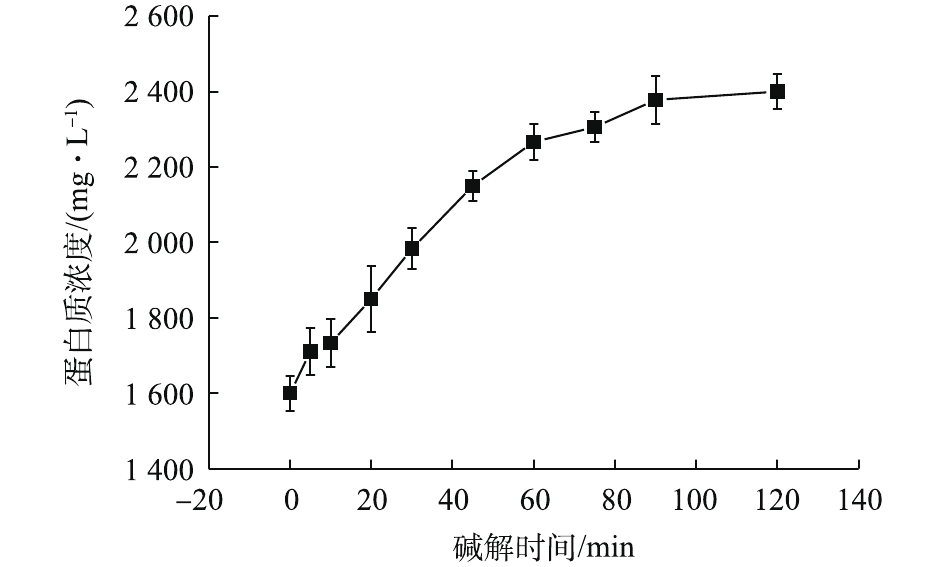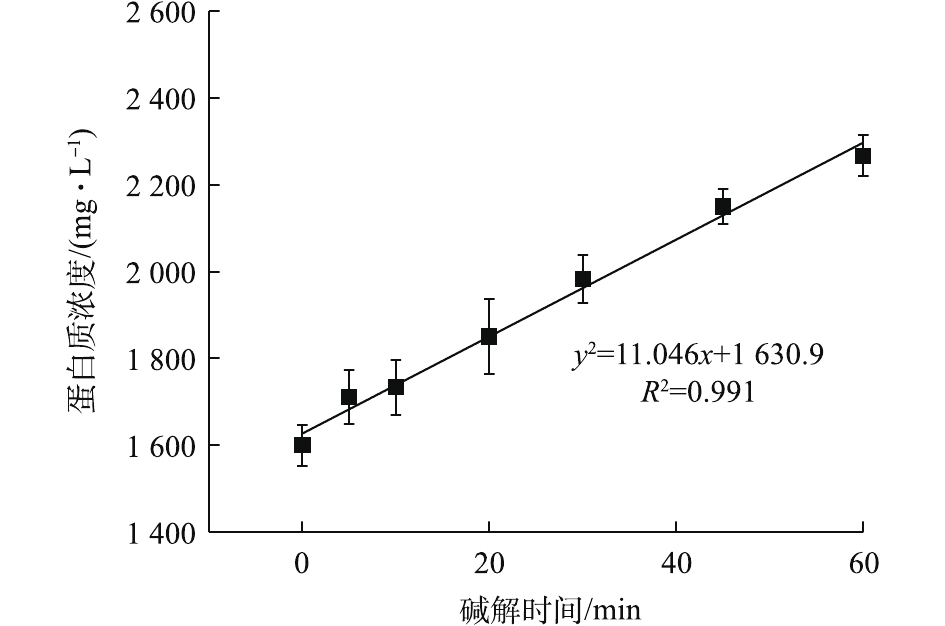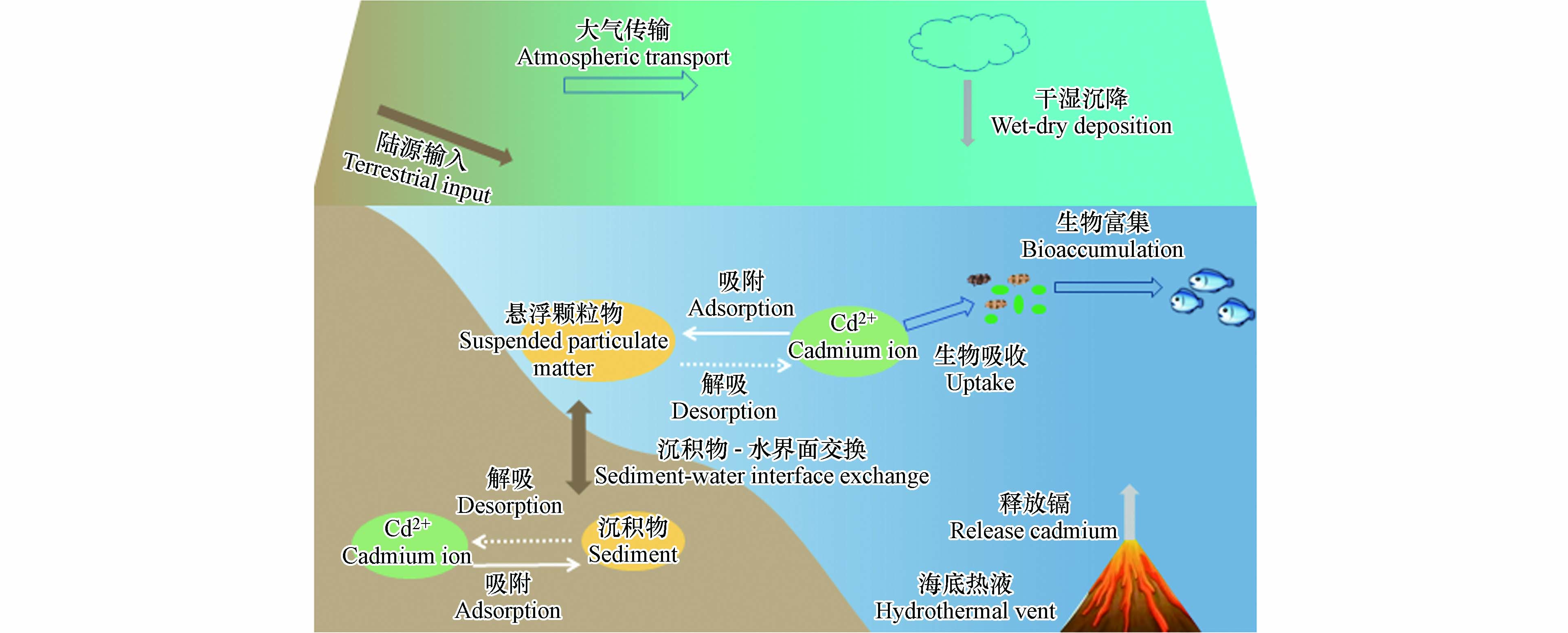-
镉,位于元素周期表第五周期ⅡB族,在自然界中主要以+2价存在,是毒性较强的重金属,在美国有毒物质和疾病登记署(ATSDR)公布的危害人体健康的有毒物质中位居第7位[1]. 镉在环境中具有不易降解、存留时间长、溶解度高等特点,可沿食物链、食物网进行迁移传递[2]. 2015年全球镉储量约500000 t,主要分布在中国和墨西哥[3],镉广泛存在于电池、颜料、涂料、电镀、金属(锌、铅和铜等)冶炼副产品、塑料稳定剂、化妆品、烟草肥料、杀虫剂及其他产品中[4-7],这些消费品的使用过程增加了人体镉暴露的风险.
环境中的镉有两种主要来源:自然来源和人为来源. 自然来源包括岩石风化、火山喷发、森林和丛林火灾燃烧、海底热液喷发等[8-9]. 镉主要的人为来源包括工业生产、种植业、养殖业、城市垃圾与污水污泥、有色金属冶炼与精炼、化石燃料燃烧、磷酸盐肥料生产、金属与电子废物回收和城市垃圾燃烧等[4, 10-11],这些人类活动每年向环境中释放了大量含镉的污染物,加剧了环境中镉的污染,并威胁到人类健康[1, 12-15]. 日本“痛痛病”事件即是由于锌冶炼厂产生的含镉废水排入神通川河中,导致附近居民饮用或食用镉污染的水、稻米、鱼后出现身体疼痛的症状[16]. 2017年江西九江“镉大米”事件再次引起公众对镉污染问题的重视[17].
海洋是地球水圈的主要组成部分. 海洋环境作为镉重要的“汇”在全球镉循环中起着重要作用. 重金属可通过陆源输入、大气沉降、海底热液释放等方式进入海洋,之后可由生物吸收、结合到悬浮颗粒物与铁锰结核/结壳上、形成硫化镉沉淀等过程从海水中去除,重金属通过沉积物再悬浮和扩散、悬浮颗粒物解吸、有机质再矿化等过程可以再次释放到水体,造成二次污染(图1). 全球每年消耗大量海产品,海产品人均年消费量在1960年为10 kg,这一数字在2014年上升到20 kg[18],海洋软体动物和甲壳类动物等海产品中具有较高含量的镉[9],海洋镉污染问题密切关系到消费者的饮食健康[19-20].
已有学者对土壤[8]、大气[21]、植物[22-23]等介质中镉的环境行为进行了系统综述,而目前缺乏对于海洋镉循环的系统梳理总结. 本文综述了海洋中镉的来源、浓度分布与影响因素、镉的生物地球化学循环过程及镉同位素在海洋中的示踪应用,并对海洋镉循环的未来研究方向进行了展望.
-
释放到环境中的镉可由多种方式进入海洋. 例如,大气中的镉可通过干湿沉降的方式进入海洋,湿沉降的贡献可占全球海洋镉大气沉降通量的80%—90%;河流输入也是海洋镉的重要来源,每年约3000 t溶解态镉和23000 t颗粒态镉输入到海洋[24]. 中国近海镉河流输送量在2016年为83 t,2017达到105 t[20]. 此外,海底热液[25-26]和沉积物释放[27]也会影响到海水中镉的分布. 不同海域大气沉降和河流输入的相对贡献不同. 例如,波罗的海每年镉的大气输入量为33 t,河流输入量为24 t[28]. 东海受径流输入影响显著的海域中仅有7.8%的镉来源于大气沉降,其余受陆源排放的影响[29].
海水中镉的平均浓度约为100 ng·L−1或更低,海洋沉积物中浓度为30—1000 µg·kg−1[19]. 海水中镉的存在形式可分为溶解态和颗粒态. 大洋表层海水中镉的平均浓度在1—100 ng·L−1左右[30],大洋中颗粒态镉浓度为0.00448—0.448 ng·kg−1[24]. 受人类活动影响显著的近海、河口、海湾等水域,海水中镉浓度通常更高. 例如,斐济苏瓦沿海地区[31]、恩诺尔河口[32]和孟加拉湾拆船厂附近[33]的海水中镉浓度值远高于海水中镉的平均浓度[19].
海水环境中毒性较大的自由离子态镉通常只占很少一部分,无机镉主要以氯化物形式存在[19, 30]. 此外,镉也可以与海洋中的有机质相互作用,如与乙二胺四乙酸(EDTA)、氨基酸、乙酸、柠檬酸、邻苯二甲酸等小分子物质或胡敏酸、富里酸、脂质等复杂有机质进行络合或螯合[34]. 研究表明黄、渤海海水中溶解有机态镉占总溶解态镉的比例为20%—92%,大洋表层水中这一比例为70%—99%[35].
一般近岸海水中镉的浓度较高[36-41],不同海域浓度值有明显差异(表1). 波斯湾[42]、加贝斯湾[43]以及凯佩兹港口[44]海水由于人为源输入较大导致镉浓度较高. 除了人为输入,海水中镉浓度还受其它因素影响. 例如,河口区Cd2+可以与Cl−、SO42-等无机离子络合,从而由沉积物转移至水相[45];Ca2+、Mg2+可与Cd2+竞争悬浮颗粒上的吸附位点[46-48],导致颗粒中镉的释放. 这些过程也会影响海水中镉的浓度. 镉在海水中的垂直分布特征多为类营养盐型[49-54],表层浓度通常最低. 南大洋南极半岛附近和威德尔海表层海水中镉浓度较低,在200—400 m达到最大值,1000 m以下海水中浓度几乎不变[55]. 南大西洋西部海水中溶解镉浓度在<100 m内开始增加,750 m处达到最大值,2000 m处浓度最低,反映了营养盐耗尽的北大西洋深层水(NADW)的输入,而受南极底层水(AABW)影响的3000 m以下海水镉浓度基本保持一致[56]. 东北太平洋SAFe站(30°N,140°W)表层海水中溶解态镉浓度较低,随着深度增加浓度迅速增加,在1000 m处浓度最高,1000 m以下浓度又略微降低[53].
受人类活动和自然因素的影响,不同海域沉积物含量表现出显著差异(表2),近岸沉积物中镉浓度通常更高[64-69]. 渤海锦州湾的表层沉积物由于采矿厂含镉污水的排放导致浓度较高[65]. 尼日利亚翁多沿岸[70]和孟加拉湾科罗曼德海岸[71]沉积物中镉浓度最高值分别达到31.60 µg·g−1和19.8 µg·g−1,远高于北冰洋喀拉海(0.09 µg·g−1)[72]、西北太平洋雅浦海沟(0.22 µg·g−1)等大洋沉积物[73]. 河口作为地表径流与海水的汇合处,是污染物沉降的主要区域[74-75],沉积物中镉浓度通常也较高[74, 76].
沉积物中镉的分布、流动性和生物可利用性不仅取决于总浓度,还与赋存形态有关[77]. 人为成因的金属主要存在于非残渣态中,残渣态金属来自于成岩矿物[78-79]. 采用改进的BCR顺序提取法研究北冰洋表层沉积物中镉赋存形态,结果显示镉主要存在于可交换和碳酸盐结合态中(平均43.4%),非残渣态占比在66.7%—100%,且39.4%的站位表现出非常高的环境风险(风险评估指数(RAC)>50%)[72]. Tessier修正法提取结果表明,渤海中部表层沉积物中镉在各相中的分布顺序为:残渣态>碳酸盐结合态>可交换态>可氧化态>可还原态,可交换态和碳酸盐结合态之和平均值为47.4%,略高于残渣态平均值(46.3%)[77]. 改进的BCR顺序提取法对巴西萨尔河口沉积物中镉赋存形态的研究结果表明,沉积物中镉可氧化态(37%)>残渣态(32%)>可交换和碳酸盐结合态(15%)>可还原态(14%),非残渣态占比高于残渣态,对水环境潜在的不利影响较大[78].
综上所述,海洋环境中镉的分布和行为受多种因素共同控制,污水直排、采矿、航运、径流输入、大气沉降、浮游植物吸收、沉积物再悬浮、颗粒物吸附、沉降、降雨、河流输入、海水输入、洋流等都会对海洋中镉的含量和分布产生影响[35, 65, 82, 86]. 镉的毒性和环境行为与其形态密切相关,目前研究工作多集中于对于沉积物和水体镉总量的测定,对于镉赋存形态的了解相对较少.
-
海洋是水圈的主体部分,镉进入水体之后会经历一系列生物地球化学过程,例如上升流、水团混合等水动力过程、悬浮颗粒物吸附解吸、沉积物吸附解吸、再悬浮过程、浮游植物吸收、再矿化等[34, 87-91].
-
水环境包含水相和悬浮颗粒物两部分. 悬浮颗粒物由有机和无机组分构成,其表面丰富的有机基团和无机离子可与重金属作用,通过吸附、沉降、再悬浮等途径使重金属在水相和沉积物中发生迁移,是重金属重要的载体[82, 92-93].
在模拟河口条件下的悬浮颗粒物实验中发现,超过90%的镉可在几个小时内被吸附,且该过程可逆[48]. 悬浮颗粒物吸附镉后可携带其沉降至沉积物中[82, 94],降低水相中的浓度. pH、离子浓度是影响悬浮颗粒物吸附镉的重要环境因素. 海水中镉-氯络合物的形成以及钙离子和镁离子对颗粒表面吸附位点的竞争[48, 95-96]可以促进颗粒态镉的解吸,pH升高[95-97]则有利于悬浮颗粒物对镉的吸附.
-
一般认为镉的生物毒性与其自由离子形态含量而不是总量相关[98]. 浮游植物作为海洋生态系统的初级生产者对重金属较敏感,镉浓度较高时会对浮游植物产生毒性. 镉暴露下,浮游植物表现出活性氧含量、叶绿素含量、最大光能转化效率、可溶性蛋白含量降低及类胡萝卜素、谷胱甘肽过氧化物酶、超氧化物歧化酶、过氧化氢酶、丙二醛增加的趋势,说明镉对浮游植物产生了毒性伤害及机体应对镉胁迫做出了自我保护反应[99-106]. 镉也可对海洋动物产生毒性,并引发生物体内的氧化应激反应[107]. 例如,暴露镉一段时间后水生动物(虾夷扇贝、近江牡蛎、栉孔扇贝、缢蛏、紫贻贝等)体内镉蓄积量增加[108-112],超氧化物歧化酶[113]、过氧化氢酶[114]、谷胱甘肽过氧化物酶[115]等活性增强. 在微生物作用下,硫酸盐可还原为硫化物,促使溶解态的镉向不溶性硫化镉转化[82, 116],从而降低镉的毒性. 此外,多项研究表明,锌限制时镉可以替代碳酸酐酶中的锌表现出一定的生物功能,促进浮游植物生长[117-123]. 例如,在锌浓度为3 pmol·L−1、二氧化碳浓度为350 mg·L−1条件下,镉添加浓度由0增加到45 pmol·L−1时,威氏海链藻的生长速率增加了2.375倍[124].
-
沉积物是海洋重金属重要的储存场所,沉积物理化环境发生变化时重金属可以再次释放进入水相中,成为水体重金属的二次源,对镉的环境行为产生重要影响.
热力学吸附实验结果表明,随着镉离子浓度的增加,沉积物镉吸附量显著增加[125]. 有氧条件有利于沉积物镉的释放,进而会增加海水中镉的浓度[126]. 在不同盐度的人工海水中,盐度由0‰增加到35‰时,沉积物中镉的释放量明显增加,这主要是镉离子与氯离子形成络合物促进了镉从沉积物中的解吸[79, 127]. 随着pH的降低,沉积物中镉总浓度呈现下降趋势,酸性的增加可能会促进金属由沉积相向水相迁移[128]. 蛋白质中含有疏水组分以及多种络合基团,外源加入牛血清白蛋白可显著促进沉积物中镉的释放[129]. 此外,沉积物再悬浮过程也会导致沉积物中镉向水体的释放[130-134].
综上所述,镉在海洋中的循环与生物吸收、悬浮颗粒物吸附/解吸以及沉积物-水界面交换过程等密切相关,而目前对于全球海洋尺度镉的收支及镉关键迁移转化过程微观动力学机制尚不清楚.
-
镉有8种稳定同位素,包括106Cd(1.25%)、108Cd(0.89%)、110Cd(12.49%)、111Cd(12.80%)、112Cd(24.13%)、113Cd(12.22%)、114Cd(28.73%)以及116Cd(7.49%)[135]. 目前,研究中多采用114Cd和110Cd的比值来表征镉同位素组成[136-137],具体计算过程见式(1—2)[50, 55]. 镉同位素数据可用于解释控制水柱中镉分布的因素或过程[25, 55, 87, 122].
式中,δ114/110Cd和ε114/110Cd分别代表样品114Cd/110Cd值相对于标准物质114Cd/110Cd值的千分偏差(δ)和万分偏差(ε);(114Cd/110Cd)sample和(114Cd/110Cd)NIST SRM 3108分别代表样品和标准物质NIST SRM 3108中114Cd和110Cd的比值[136].
同位素比值的变化可用来反应浮游植物的吸收和再矿化过程[53, 138-139]. 研究者发现热带南太平洋东部海水δ114/110Cd值由深层水向表层水呈增加趋势,说明表层浮游植物优先吸收更轻的同位素[140]. 在秘鲁上升流区,表层海水中由于浮游植物的吸收表现为低镉浓度和高δ114/110Cd值,而深层水中由于有机质再矿化表现为相反趋势[141]. 此外,在大西洋、南大洋、太平洋及北冰洋≤50 m的透光层中也发现了更低的镉浓度和高的ε114/110Cd值[138]. 南大洋威德尔环流ε114/110Cd最低值与镉浓度最高值存在的深度大致相同,可能是有机质再矿化的结果[55].
镉同位素分馏情况还可用来指示水团混合过程[25, 138-139, 141-143]. 热带大西洋中层和深层水的δ114/110Cd值与南极中层水(AAIW)/南极底层水(AABW)和北大西洋深层水(NADW)的混合结果一致,表明镉同位素分布受水团混合的控制[144]. 在北冰洋西部海水中镉同位素的剖面图中发现,300 m以上海水中镉浓度及δ114/110Cd值均处在北大西洋和北太平洋浓度值之间,反映了大西洋和太平洋水的混合;300 m以下北极水中镉浓度和δ114/110Cd值和北大西洋类似,这一现象与北冰洋深处大部分水是从大西洋经弗拉姆海峡流入的事实相符[50]. 北大西洋海水中δ114/110Cd值存在垂直梯度,>3000 m的深水区δ114/110Cd值最低(0.24‰±0.06‰),1000 m处约为0.4‰,表层混合层表现出了最大同位素比值(5‰),这种变化可能是由于南极水团和北大西洋水团的混合,以及表层海水中生物对轻同位素的优先吸收[25].
硫化镉沉淀的形成也会产生镉同位素分馏,通常硫化镉与海水相比表现出更轻的同位素组成[122, 141, 145-147]. 铁锰结核/结壳可以对水柱中的镉进行清除,其ε114/110Cd值与海水的同位素组成接近,可以反映海水镉同位素组成[122-123, 148]. 锰氧化物对镉吸附引起的同位素分馏程度可能与离子强度有关,在低的离子强度下同位素分馏程度更大,铁锰结核/结壳与海水的镉同位素组成接近可能是由于海水的离子强度高(~0.7 mol·L−1)[149].
此外,镉同位素组成还可以用来示踪污染物来源[135, 150-152]. 营养盐极度匮乏的西南太平洋亚热带环流海水δ114/110Cd值从混合层底部到顶部呈降低趋势,除了受到海洋内部上升流的影响外也可能与强降雨事件输送大气Cd同位素组成相对较轻有关[87]. 西伯利亚河流与北冰洋混合区大部分海水样品的Cd同位素组成符合北极海水-河水准二元混合结果,5个镉浓度异常高的样品表明混合过程存在河流悬浮颗粒物镉的释放,解吸部分δ114/110Cd值约为3,符合自然来源的特征(河水δ114/110Cd值约为2±1)[153]. 海底烟囱中黑烟硫化物样品的镉同位素数据可反映原始热液的同位素组成,样品的δ114/110Cd值低于大洋深层水的平均值,而与地球全硅酸盐的值相似,该现象表明原始热液的镉同位素特征可能主要源自于玄武质洋壳中溶出的镉[123]. 此外,工业生产及其它人类活动中可产生镉同位素分馏的现象[135, 154],可根据生物及环境样品同位素组成推测镉污染物可能的来源. 英吉利海峡双壳类动物中,塞纳河口紫贻贝(Mytilus edulis)的镉浓度最高、同位素组成最轻,推测污染来源于工业废弃物的排放;地中海沿岸德巴格斯与普雷沃斯特的紫贻贝(Mytilus galloprovincialis)相比,镉浓度更高、同位素组成相对更轻,推测与附近纳博讷市颜料厂的镉排放有关[154]. 美国切萨皮克湾博德金角比查普唐克河牡蛎(Crassostrea virginica)中镉的浓度更高、同位素组成更轻,受巴尔的摩港人为排放污染影响显著;查尔斯顿港牡蛎(Crassostrea virginica)有较轻的镉同位素组成,表明镉主要来自具有轻同位素组成的排放源(例如,锌冶炼、精炼)[155].
-
海洋是陆源镉污染物重要的“汇”. 目前关于海洋镉循环已有较多研究,但仍有许多问题亟待解决,例如全球气候变化和海洋酸化等对镉循环的影响、镉对海洋生态系统的长期影响和风险、海洋镉污染物的来源解析等. 为回答这些问题,需要对镉全球海洋大尺度循环、迁移转化及微观动力学机制等进行更深入的了解,这依赖于镉同位素示踪/分馏、分子生物学和生物地球化学模式等多学科手段的开发应用.
海洋镉生物地球化学循环研究进展
Research progress on the biogeochemical cycling of cadmium in the ocean
-
摘要: 镉是一种重要的有毒重金属元素,对生态系统和人体健康造成严重威胁. 目前已有学者对土壤、大气、植物等介质中镉的环境行为进行了综述,而对海洋镉循环的系统梳理较少. 本文综述了海洋中镉的来源、浓度分布与影响因素、镉生物地球化学循环过程及镉同位素在海洋中的示踪应用,并对海洋镉循环未来研究方向进行了展望. 在现有研究的基础上,未来应在镉全球海洋大尺度循环、迁移转化及微观动力学机制方面开展更深入研究. 海洋镉及其同位素生物地球化学循环的研究可为深入理解镉的环境行为与风险和发展有效的镉污染风险防控技术提供科学依据和数据支撑.Abstract: Cadmium (Cd) is an important toxic metal that poses a serious threat to ecosystem and human health. Researchers have already comprehensively reviewed the environmental behavior of Cd in soil, atmosphere, plants; however, there is still lack of a systematic review of Cd cycling in marine environments. This paper reviewed the source, distribution and influencing factors of Cd, the biogeochemical cycling of Cd and its isotopes, and the application of Cd isotopes in the ocean. Future perspectives of this research area were also discussed. Based on the current studies, future studies should focus on the large-scale cycling of Cd in global ocean, transport and transformation processes of Cd and their microcosmic mechanisms. The study on the biogeochemical cycling of marine Cd and its isotopes can provide scientific basis and data support for deep understanding of the environmental behavior and risk of Cd and the development of effective prevention and control techniques for Cd pollution.
-
Key words:
- cadmium /
- ocean /
- biogeochemical cycling /
- isotopic fractionation.
-
随着我国水处理需求及能力的大幅度提升,剩余污泥的产量也逐渐增大。据预测,2020—2025年间,剩余污泥的年产量将突破6×107 t(以含水率80%计)[1]。相比污水的处理,我国的污泥处理能力相对滞后[2]。由于污泥中含有大量的重金属和有毒有害物质[3],80%以上的污泥由于处理不当,已成为造成环境二次污染的污染源[4]。因此,污泥的妥善处理处置已成为亟需解决的环境问题之一。
剩余污泥中的有机物主要包括蛋白质和多糖[5]。其中,蛋白质含量为20%~40%,是一种有机质资源,通过污泥蛋白质回收实现其资源化,是剩余污泥处理处置的重要途径之一[6]。剩余污泥中的蛋白质主要存在于微生物细胞内,通过水解破胞技术将微生物细胞内蛋白质释放到溶液中,是污泥蛋白质回收的前提[7]。目前,水解破胞技术主要包括物理法、化学法和生物法。XIAO等[8]采用热处理溶出污泥蛋白质,可使溶液中的蛋白质浓度提高12倍。肖本益等[9]采用碱法处理活性污泥,10 g·L−1的污泥在pH 12.0的条件下,处理12 h后,溶解性蛋白质浓度增加了2 058.6 mg·L−1。章文锋等[10]采用酶法回收污泥蛋白质,发现碱性蛋白酶在pH 8、温度55 ℃、酶投加量2%、反应时间4 h及污泥液固比4∶1条件下,污泥蛋白提取率可达52.5%。ASSAWAMONGKHOLSIRI等[11]采用热酸法溶出蛋白质,在pH为1.0的条件下,预处理6 h,然后在110 ℃下加热60 min,可溶性蛋白质浓度提高了4.8倍。CHO等[12]发现,在60 ℃和pH 12的条件下处理1 h,污泥释放的蛋白质是未预处理污泥的2.4倍,而单独碱解释放的蛋白质是未预处理污泥的2.1倍。LIU等[13]用超声联合碱处理的方法溶出污泥蛋白,在18 kHz和pH 12下处理1 h,蛋白质浓度增加到7.9 g·L−1。SAHINKAYA[14]采用超声联合酸处理的方法分解污泥,在超声功率密度为1 W·mL−1、处理时间为10 min、初始污泥pH为2.0的最佳条件下,蛋白质浓度可达1 750 mg·L−1。然而,目前污泥联合水解工艺多处于实验室研究阶段,其中试及产业化效果则有待考证。
为此,本研究建立了日处理规模为1 m3剩余污泥(含水率为80%)的中试水解系统。采用酶联合热碱水解技术,优化了影响蛋白质溶出效果的关键工艺条件,包括酶解时间、酶投加量及碱解时间等;同时,进一步研究了污泥水解的动力学特性,解析了联合水解过程的限速步骤,以期为剩余污泥联合水解工艺的产业化应用提供必要的技术参数。
1. 材料与方法
1.1 实验材料
实验所用污泥取自天津某污水处理厂脱水污泥,该厂采用A2/O工艺。脱水污泥含水率为80.52%、有机物含量为51.46%、粗蛋白含量为22.47%。水解用酶制剂为通用商品酶,木瓜蛋白酶和碱性蛋白酶酶活分别为8×105 U·g−1和1×105 U·g−1、最适pH分别为6.0~7.0和8.5~10.5、最适温度分别为(50~55) ℃和(40~60) ℃。
1.2 实验装置
处理规模为1 m3(含水率为80%)的中试污泥水解装置示意图及实物图如图1所示。水解罐内外均为不锈钢,水浴加热,功率为20 kW,容积为1.5 m3,内部直径为1.1 m。螺杆泵流量为5 m3·h−1,功率为2.2 kW。调浆桶体积为1.5 m3,使用PE材质。
1.3 酶-热碱联合水解的关键工艺条件优化
先将脱水污泥分别配制成20、30、40和50 g·L−1污泥混合液,在55 ℃条件下,分别投加1%、2%和3%污泥干重的复合酶(木瓜蛋白酶:碱性蛋白酶=12:1);然后,分别酶解1、1.5、2和2.5 h;接着,分别在70、80和90 ℃条件下,投加NaOH将污泥溶液pH调至12.5,进行热碱水解,水解时间分别为0.5、1、1.5、2、2.5和3 h,研究酶-热碱联合水解条件对蛋白质溶出效果的影响。
1.4 动力学特性研究
将脱水污泥配制成10、20、30、40和50 g·L−1的污泥混合液,在55 ℃条件下,分别投加污泥干重1%、2%和3%的复合酶,研究其污泥酶解动力学特性。
将脱水污泥配制成30 g·L−1的污泥混合液,在55 ℃条件下,分别投加污泥干重1%的复合酶,酶解1.5 h后,在80 ℃并调节pH至12.5进行碱解,研究其碱解动力学特性。
1.5 分析方法
污泥粗蛋白采用凯式定氮法[15]测定;TCOD(总化学需氧量)、SCOD(溶解性化学需氧量)、
NH+4 -N(氨氮)、PO3−4 -P(磷酸盐)和TP(总磷)均采用标准方法[16]测定。污泥含水率、有机物含量及pH等均参照《城市污水处理厂污泥检测方法》中的方法[17]进行测定。溶液中蛋白质浓度采用考马斯亮蓝G-250法[18]测定。蛋白质溶出率根据式(1)计算得出。
w1=cVm×100% (1) 式中:
w1 为蛋白质溶出率;c 为上清液蛋白质浓度,mg·L−1;V 为离心后所得上清液体积,L;m 为原始污泥中蛋白质质量,mg。COD溶出率根据式(2)计算得出。
w2=CSCOD−CSCOD0CTCOD−CSCOD0×100% (2) 式中:
w2 为COD溶出率;CSCOD 为处理后上清液SCOD浓度,mg·L−1;CSCOD0 为原污泥溶液初始SCOD,mg·L−1;CTCOD 为原污泥溶液的TCOD,mg·L−1。2. 结果与讨论
2.1 污泥酶解的关键因素优化及其动力学
酶解时间对污泥蛋白质溶出效果的影响如图2所示,随着酶解时间的延长,蛋白质浓度和蛋白质溶出率均呈现出先增加再降低的趋势。酶解时间为1.5 h时,蛋白质浓度和蛋白质溶出率均达到最高,分别为2 381.05 mg·L−1和31.18%。酶可以破坏污泥的絮体结构[19],将细胞表面暴露出来,进一步分解微生物细胞壁[20],提高污泥的水解效果,利于蛋白质的溶出。然而,随着酶解时间的进一步提高,投加的酶会水解部分溶出的蛋白质,最终生成小分子酸、氨和CO2[21],从而导致水解液中蛋白质浓度降低,这也可以从图3中
NH+4 -N浓度的变化看出。如图3所示,NH+4 -N浓度在酶解2 h后明显上升,从47.87 mg·L−1上升到83.33 mg·L−1。这说明,过长的酶解时间会导致溶出的蛋白质分解。OP(有机磷,即总磷和磷酸盐之差)含量虽略有上升却较为接近。这说明酶解时间的延长对污泥内DNA、RNA等含有有机磷物质的溶出影响不大,即污泥破胞效果并没有随着酶解时间的延长而明显加强。这一点从SCOD的变化也能反映出来,SCOD从酶解1 h时的14 250 mg·L−1上升到酶解2.5 h时的15 400 mg·L−1,反应时间延长了1.5 h,SCOD却只增加了近1 000 mg·L−1,效果并不明显。因此,酶解时间为1.5 h时,污泥蛋白质溶出效果最佳。酶投加量对污泥蛋白质溶出效果的影响如图4所示,酶投加量为1%时,污泥水解液中蛋白质浓度为2 381.05 mg·L−1。当酶投加量由1%增加至3%时,水解液中蛋白质浓度及污泥蛋白质溶出率呈略微增加的趋势,蛋白质浓度只增加了3.8%。由图5可知,
NH+4 -N浓度随着酶投加量的增加而显著的增加。酶的投加量为3%时,污泥水解液中NH+4 -N浓度为74.47 mg·L−1,相比酶投加量为1%,NH+4 -N浓度增加了62%。这可能是因为,酶量较多时,蛋白质易被降解并转化为多肽和氨基酸并进一步降解[22],这也与NH+4 -N浓度升高的结果一致。因此,酶投加量的增加对污泥蛋白质溶出效率几乎无影响,但成本却明显提高。从SCOD和OP含量变化也可发现,酶投加量的增加,对于污泥的破胞效果影响甚微。因此,综合考虑效果和成本,最佳的酶投加量为污泥干重的1%。污泥浓度对污泥蛋白质溶出率的影响如图6所示。由图6可以看出,随着污泥浓度的增加,水解液中蛋白质浓度先明显增加,后缓慢增加。当污泥浓度由20 g·L−1增加至30 g·L−1时,水解液中蛋白质浓度由1 952.47 mg·L−1增加至2 381.05 mg·L−1。然而,进一部提高污泥浓度,水解液中蛋白质浓度呈现略微增加的趋势,50 g·L−1时蛋白质浓度仅为2 512.63 mg·L−1。但是,蛋白质溶出率却随着污泥浓度的增加而降低,20 g·L−1时的蛋白质溶出率最高,达到了36.88%;其次是30 g·L−1时的31.18%,最低为50 g·L−1时的16.71%。与污泥浓度为20 g·L−1时的蛋白质浓度和溶出率相比,当污泥浓度分别为30和40·L−1时,其蛋白质浓度分别提高了21.95%和25.09%。但是,蛋白质溶出率却分别降低了15.46%和42.46%。可以发现,当污泥浓度高于30 g·L−1时,蛋白质浓度提升不明显,而且溶出率明显降低。这是因为,污泥浓度越高,底物所含的蛋白质含量更多,因此溶出的蛋白质浓度更高。但是,污泥浓度越高,碱及热量的传质越困难,可能导致污泥受热不均或不充分,水解效果越差[23],蛋白质溶出率越低。所以,综合考虑,污泥浓度为30 g·L−1时,蛋白质溶出效果最优。这也可以从图7中的SCOD含量变化得到印证,虽然污泥浓度的升高使水解液中的SCOD浓度也随之升高,但计算却发现COD溶出率随之降低;同时,污泥浓度的升高也会使溶液的传热效率降低,导致能耗更高,因此最佳污泥浓度为30 g·L−1。
由于污泥成分复杂,而其中的无机物无法作为底物来参与酶解反应。因此,以污泥中的VSS(可挥发性悬浮物)作为底物,来研究底物浓度与酶解速率的关系。不同酶投加量条件下,各底物浓度下的酶解速率如图8所示。可以发现,酶解速率都随着底物浓度的增加先增加,再逐渐趋于稳定,在底物浓度较低时,反应速率与底物浓度几乎呈正比关系,呈一级反应;当底物浓度较高时,反应速率增加缓慢或不增加,呈零级反应。因此,底物浓度和反应速率的曲线,符合经典的米氏方程[24],故可用米氏方程对实验数据作进一步拟合。同时发现,酶投加量的增加,在底物浓度较低时,可以提高反应速率。然而,当底物浓度大于17.37 g·L−1,即污泥浓度高于30 g·L−1时,酶投加量的增加对反应速率并无明显影响,从这一点也可以说明1%的酶投加量为最佳酶投加量。
Michaelis-Menten假定了酶与底物的酶促反应分2步[25]进行。
E+SK1,K−1↔E−SK2,K−2↔E+P (3) 式中:
K1 、K−1 、K2 和K−2 分别为各向反应的速度常数;E 表示酶;S 表示底物;E-S表示酶-底物络合物,即中间产物;P 表示最终产物。酶(
E )与底物(S )结合生成中间产物(E-S),在中间产物分解成产物(P )的同时,E 重新游离出来。在反应初期,P 浓度极低,不足以引起可逆反应,故K−2 可忽略不计。因此,第2步反应是单向的,即可推出酶解动力学方程为式(4)。v=K−1CE0CSK−1+K2K1+CS (4) 式中:
v 为酶解速率;CS 为底物质量浓度;CE0=CE+CE−S ,CE−S 为中间产物浓度。令
Km=(K−1+K2)/K1 ,vmax=K−1CE0 ,则方程可以简化为式(5)。方程(5)即为复合酶水解污泥的米氏方程。v=vmaxCSKm+CS (5) 由方程(5)可以得出式(6)。
1v=Km+CSvmaxCS=1vmax+KmvmaxCS (6) 式中:
Km/vmax 为直线斜率;1/vmax 为截距。采用Lineweaver-Burk(双倒数作图法)[26]求解动力学模型参数,对Lineweaver-Burk图数据进行拟合,如图9所示。结果表明,动力学方程拟合效果较好,如表1所示。可见,随着酶投加量的增加,
vmax 和Km 值都呈降低趋势。其原因可能是酶浓度的升高增强了底物竞争,这反而不利于污泥的水解。因此,1%的酶投加量为最佳,这也与前面的结果一致。当酶投加量为1%时,vmax 为0.709 mg·(L·min)−1,Km 为13.13 mg·L−1。表 1 参数及动力学方程Table 1. Parameters and dynamic equations酶投加量/%  /(mg·L-1)
/(mg·L-1) /(mg·(L·min)-1)
/(mg·(L·min)-1)R2 显著性(α<0.05) 反应动力学方程 1 13.13 0.709 0.997 0.001 
2 7.77 0.659 0.985 0.001 
3 5.36 0.611 0.986 0.001 
2.2 污泥碱解的关键因素优化及其动力学
在酶解时间1.5 h、酶投加量1%和污泥浓度30 g·L−1的最佳条件下,继续进行污泥的热碱水解。图10给出了碱解时间对污泥蛋白质溶出效率的影响。由图10可知,碱解时间为1.5 h时,水解液中的蛋白质浓度最高,达2 149.47 mg·L−1,28.15%的蛋白质溶出率也为最高。过短或过长的碱解时间均导致污泥中蛋白质溶出效率降低。这是因为,碱能使膜脂皂化和微生物细胞损伤,破坏细胞结构[27],有效地释放胞内蛋白质;但是,在碱性条件下,蛋白质易发生水解[28],当碱解时间过长时,蛋白质水解速率超过其溶出速率,降低了水解液中蛋白质浓度,影响了整个污泥水解过程中蛋白质溶出效率。期间,SCOD和
NH+4 -N及OP的浓度变化如图11所示。可见,随着碱解时间的延长,SCOD浓度先快速增加后缓慢增加。这是因为,更长的碱解时间导致更多的物质溶解溶入液相,提高了SCOD含量,而OP含量随着碱解时间的延长先增加后趋于稳定。NH+4 -N含量的变化趋势则有所不同,呈先增加后逐渐降低的趋势。其可能的原因是,在碱性条件下,NH+4 -N更容易与OH−结合呈NH3·H2O状态并从液相中挥发出来,造成NH+4 -N浓度的降低。这一点与BI等[29]的研究发现一致。因此,最佳碱解时间为1.5 h。如图12所示,不同碱解温度条件下,污泥水解液的蛋白质浓度及蛋白质回收率均随着碱解温度的升高先增加后减小,分别从70 ℃时的1 944.21 mg·L−1和25.56%上升到80 ℃时的2 160 mg·L−1和28.29%,然后下降到90 ℃时的2 044.21 mg·L−1和27.28%。蛋白质在高温强碱环境下易降解发生脱氨作用,生成氨气和不饱和羧酸盐,氨气在碱性条件下逸出[30],降低了溶解性蛋白质浓度。当酶解温度温度由70 ℃升高到80 ℃时,由于温度的升高,污泥受热分解效果更好,因而蛋白质浓度和蛋白质溶出率均有所升高。然而,当酶解温度温度由80 ℃升到90 ℃时,温度的升高及升温时间的增加导致部分蛋白质的降解或变性[31]。何玉凤[32]也发现,当温度在75~95 ℃时,蛋白质容易变性,导致蛋白质浓度和溶出率的降低。观察图13中SCOD等的变化发现,随着碱解温度的升高,SCOD浓度也呈上升趋势。这说明,有更多的有机物随着温度的升高而分解,污泥水解效果得到提高。
NH+4 -N浓度在90 ℃下明显升高,也说明了有更多的蛋白质在此温度下被降解。OP含量从70 ℃时的84.60 mg·L−1增加90 ℃时的95.40 mg·L−1。这说明温度的升高能提高污泥的破胞效果,但效果有限。因此综合分析,最佳碱解温度为80 ℃。由图14可知,当污泥浓度为30 g·L−1时,酶解1.5 h后进行碱解,蛋白质浓度随着碱解时间的延长而升高。酶解时间为0 min时,蛋白质浓度为1 600.01 mg·L−1。这是因为,加碱将pH调到12.5以后,升温过程中热解加上碱解,使得0 min时的蛋白质浓度较酶解完大幅上升。蛋白质浓度升高到20 min时的1 849.99 mg·L−1继而快速上升到30 min时的1 983.31 mg·L−1,一直快速上升到60 min时的2 266.61 mg·L−1。酶解时间为60~90 min时,蛋白质浓度上升变缓。酶解时间为90 min时,蛋白质浓度为2 377.71 mg·L−1,继续延长碱解时间,酶解时间到120 min时,蛋白质浓度为2 399.93 mg·L−1,趋于稳定。这可能是因为随着实验的进行,前期污泥细胞的破坏较为剧烈,导致蛋白质浓度快速升高,其后效果减弱,但是依然在进行蛋白质的溶出,最后反应接近完全。因此,蛋白质浓度趋于稳定。基于此,将60 min前结果进行线性拟合,以拟合得到的方程斜率作为该浓度下碱解反应的速率,方程拟合结果如图15所示,结果表明,动力学方程拟合效果较好。
进一步求得方程参数,结果发现动力学方程为y=11.046x+1 630.9(R2=0.991),拟合效果较好,即30 g·L−1的污泥溶液的碱解速率为11.046 mg·(L·min)−1。可以发现,与酶解相比,碱解速率提高了15.58倍,酶解是剩余污泥联合水解的限速步骤。这是因为,酶解效果跟多种因素有关。首先,可能是因为部分生物酶被截流或束缚在污泥结构中,与污泥细胞的充分接触受到了限制[33];其次,也可能是污泥成分复杂,对酶活性影响较大。而细胞壁中存在的脂类物质可以被碱分解,只要混合均匀,碱解效果就会较好;而且,碱解温度比酶解温度高25 ℃,一般反应温度每上升10 ℃,反应速率会提高2~3倍[34]。因此,碱解速率远高于酶解速率。
3. 结论
1)采用酶-热碱联合水解工艺,日处理量为1 m3剩余污泥(含水率80%)中试水解系统的最佳酶解时间为1.5 h、复合酶投加量为1%、污泥浓度为30 g·L−1、碱解时间为1.5 h、碱解温度为80 ℃。此时,水解上清液中蛋白质浓度为2 160 mg·L−1。以上研究结果可为该工艺的产业化应用提供必要的技术参数。
2)剩余污泥的酶解过程遵循米氏方程,最大酶解速率
vmax 和米氏常数Km 分别为0.709 mg·(L·min)−1和13.13 mg·L−1。剩余污泥的碱解过程符合零级动力学方程,碱解速率为11.046 mg·(L·min)−1。酶-热碱联合水解工艺中,酶解是限速步骤,如何在实践中进一步提高酶解速率是该工艺产业化应用成功与否的关键。 -
表 1 海水中镉的浓度分布及主要来源
Table 1. Concentrations and distribution of cadmium in seawater and its major sources
研究区域Study area 浓度/(μg·L−1)Concentration 主要来源Main source 参考文献Reference 山东半岛南部近海 春季:0.15夏季:0.3秋季:0.28冬季:0.22 陆源输入 [36] 莱州湾 0.28 河流输入 [57] 罗源湾 0.14 径流输入、沿岸排污 [38] 丁字湾 湾内:0.43湾外:0.31 — [39] 黄、渤海 渤海:0.644北黄海:0.470南黄海:0.274 径流输入、大气沉降、人类活动 [35] 厦门九龙江河口 0.34 径流输入、沉积物再悬浮 [45] 印度东南沿岸 0.11 — [58] 波斯湾 30 人类活动 [42] 凯佩兹港口 73800 多瑙河排放、污水排放、压舱水工业废料、船舶事业及港口设施 [44] 加贝斯湾 48.1 工业活动 [43] 斐济苏瓦沿海地区 130 人类活动 [31] 德雷克海峡与南极半岛 0.067 — [59] 孟加拉湾拆船区附近 4 人类活动 [33] 印度恩诺尔河口 5.6 人类活动 [32] 175°E,赤道太平洋(0—40 m) 2001年:0.0032002年:0.002 — [60] 印度洋 表层:0.015底层:0.064 — [61] 北冰洋楚科奇海 巴罗海谷:0.23波因特莱:0.1 — [62] 南大西洋 表层:0.07 — [63] 表 2 沉积物中镉的浓度分布及主要来源
Table 2. Concentrations and distribution of cadmium in sediment and its major sources
研究区域Study area 浓度/(μg·g−1)Concentration 主要来源Main source 参考文献Reference 长江口及其邻近海域 0.136 陆源输入、工业污染、生物活动 [64] 东海沿岸 0.096 陆源输入 [69] 马来西亚吉兰丹沿岸河口区 3.69 人类活动 [80] 渤海 0.27 河流输入、大气沉降、直接排放、生物过程 [65] 莱州湾 0.33 河流输入 [57] 渤海 1980s:0.26近15年:0.31 径流输入、大气沉降、人类活动 [81] 亚马逊瓜亚加拉河口 雨季:491干季:536 — [82] 胶州湾 0.11 — [20] 内伊兹米特湾 0.37 地表径流、河流输入和废水排放 [83] 长江口及毗邻东海海域 0.19 地表径流输入的农药和化肥 [66] 埃德雷米特湾 0.14 自然过程、人为输入 [84] 突尼斯湾沿岸 0.3 城镇污水、工业废弃物、河流、泻湖输入 [85] 孟加拉湾拆船区附近 4.81 人类活动 [33] 加贝斯湾 198.7 工业活动 [43] 北冰洋边缘海-东西伯利亚海 0.21 — [46] 北冰洋 0.29 — [72] -
[1] SUHANI I, SAHAB S, SRIVASTAVA V, et al. Impact of cadmium pollution on food safety and human health [J]. Current Opinion in Toxicology, 2021, 27: 1-7. doi: 10.1016/j.cotox.2021.04.004 [2] CHENG Y L, WANG K Q, TU B Y, et al. High-temperature reduction of calcium alginate to carbon sphere for efficient removal of bivalent cadmium [J]. ChemistrySelect, 2019, 4(31): 9058-9064. doi: 10.1002/slct.201902329 [3] SHI J J, SHI Y, FENG Y L, et al. Anthropogenic cadmium cycles and emissions in Mainland China 1990-2015 [J]. Journal of Cleaner Production, 2019, 230: 1256-1265. doi: 10.1016/j.jclepro.2019.05.166 [4] YUAN Z W, LUO T, LIU X W, et al. Tracing anthropogenic cadmium emissions: From sources to pollution [J]. Science of the Total Environment, 2019, 676: 87-96. doi: 10.1016/j.scitotenv.2019.04.250 [5] SATIR S. The relationship between oral cancer and cadmium: A review [J]. Molecular Biology Reports, 2022, 49(3): 2413-2419. doi: 10.1007/s11033-021-07000-w [6] PARIZI M G, SEDAGHAT Z, MAZLOOMI M, et al. Serum level of lead and cadmium is linked to facial cosmetics use among Iranian young women [J]. Environmental Science and Pollution Research International, 2021, 28(11): 13913-13918. doi: 10.1007/s11356-020-11618-x [7] FATIMA G, RAZA A M, HADI N, et al. Cadmium in human diseases: It's more than just a mere metal [J]. Indian Journal of Clinical Biochemistry, 2019, 34(4): 371-378. doi: 10.1007/s12291-019-00839-8 [8] KUBIER A, WILKIN R T, PICHLER T. Cadmium in soils and groundwater: A review [J]. Applied Geochemistry, 2019, 108: 104388. doi: 10.1016/j.apgeochem.2019.104388 [9] ANGELETTI R, BINATO G, GUIDOTTI M, et al. Cadmium bioaccumulation in Mediterranean spider crab (Maya squinado): Human consumption and health implications for exposure in Italian population [J]. Chemosphere, 2014, 100: 83-88. doi: 10.1016/j.chemosphere.2013.12.056 [10] PAN J L, PLANT J A, VOULVOULIS N, et al. Cadmium levels in Europe: Implications for human health [J]. Environmental Geochemistry and Health, 2010, 32(1): 1-12. doi: 10.1007/s10653-009-9273-2 [11] TURNER A. Cadmium pigments in consumer products and their health risks [J]. Science of the Total Environment, 2019, 657: 1409-1418. doi: 10.1016/j.scitotenv.2018.12.096 [12] 李晓燕, 孙成良, 常彩彩, 等. 莱州湾海域甲壳类海产品中铅、镉含量分析及安全性评价 [J]. 食品安全导刊, 2021(6): 107-109. doi: 10.16043/j.cnki.cfs.2021.06.066 LI X Y, SUN C L, CHANG C C, et al. Content analysis and safety evaluation of lead and cadmium in crustacean seafood in Laizhou Bay [J]. China Food Safety Magazine, 2021(6): 107-109(in Chinese). doi: 10.16043/j.cnki.cfs.2021.06.066
[13] 高蜜, 吴星, KLERKS P L, 等. 葫芦岛海产品重金属含量及健康风险分析 [J]. 生态学杂志, 2016, 35(1): 205-211. GAO M, WU X, KLERKS P L, et al. Metal levels in seafood of the Huludao coast and associated health risks [J]. Chinese Journal of Ecology, 2016, 35(1): 205-211(in Chinese).
[14] 范新凤, 韩美, 王磊, 等. 小清河入海口近十年水质变化及驱动因素分析 [J]. 环境科学, 2020, 41(4): 1619-1628. FAN X F, HAN M, WANG L, et al. Analysis of water quality change and its driving factors of the Xiaoqing River Estuary in recent ten rears [J]. Environmental Science, 2020, 41(4): 1619-1628(in Chinese).
[15] 胡小颖, 高孟春, 孙永福. 浅析海洋污染对公众健康的影响及防治措施 [J]. 海洋开发与管理, 2008, 25(7): 68-73. doi: 10.3969/j.issn.1005-9857.2008.07.014 HU X Y, GAO M C, SUN Y F. Analysis on the impact of marine pollution on public health and prevention measures [J]. Ocean Development and Management, 2008, 25(7): 68-73(in Chinese). doi: 10.3969/j.issn.1005-9857.2008.07.014
[16] 莫若斌, 曲伯华. 1931年日本发生富山“痛痛病”事件 [J]. 环境导报, 2003(16): 20. MO R B, QU B H. In 1931, Toyama's " itai-itai disease " occurred in Japan [J]. Environment Herald, 2003(16): 20(in Chinese).
[17] 王雯慧. 袁隆平: 水稻亲本去镉技术获突破 [J]. 中国农村科技, 2017(12): 26-27. WANG W H. YUAN L P: Breakthrough in cadmium removal technology of rice parents [J]. China Rural Science & Technology, 2017(12): 26-27(in Chinese).
[18] GUILLEN J, NATALE F, CARVALHO N, et al. Global seafood consumption footprint [J]. Ambio, 2019, 48(2): 111-122. doi: 10.1007/s13280-018-1060-9 [19] STORELLI M M. Cadmium exposure from seafood intake[M]//Encyclopedia of Environmental Health. Amsterdam: Elsevier, 2011: 456-464. [20] GU X, XU L, WANG Z X, et al. Assessment of cadmium pollution and subsequent ecological and health risks in Jiaozhou Bay of the Yellow Sea [J]. Science of the Total Environment, 2021, 774: 145016. doi: 10.1016/j.scitotenv.2021.145016 [21] WILLIAMS C R, HARRISON R M. Cadmium in the atmosphere [J]. Experientia, 1984, 40(1): 29-36. doi: 10.1007/BF01959099 [22] DAS P, SAMANTARAY S, ROUT G R. Studies on cadmium toxicity in plants: A review [J]. Environmental Pollution, 1997, 98(1): 29-36. doi: 10.1016/S0269-7491(97)00110-3 [23] QIN S Y, LIU H E, NIE Z J, et al. Toxicity of cadmium and its competition with mineral nutrients for uptake by plants: A review [J]. Pedosphere, 2020, 30(2): 168-180. doi: 10.1016/S1002-0160(20)60002-9 [24] CULLEN J T, MALDONADO M T. Cadmium: from toxicity to essentiality [M]. Dordrecht: Springer, 2013: 31-62. [25] CONWAY T M, JOHN S G. Biogeochemical cycling of cadmium isotopes along a high-resolution section through the North Atlantic Ocean [J]. Geochimica et Cosmochimica Acta, 2015, 148: 269-283. doi: 10.1016/j.gca.2014.09.032 [26] COHEN N R, NOBLE A E, MORAN D M, et al. Hydrothermal trace metal release and microbial metabolism in the northeastern Lau Basin of the South Pacific Ocean [J]. Biogeosciences, 2021, 18(19): 5397-5422. doi: 10.5194/bg-18-5397-2021 [27] GARNIER J M, GUIEU C. Release of cadmium in the Danube Estuary: Contribution of physical and chemical processes as determined by an experimental approach [J]. Marine Environmental Research, 2003, 55(1): 5-25. doi: 10.1016/S0141-1136(02)00107-1 [28] SCHNEIDER B, CEBURNIS D, MARKS R, et al. Atmospheric Pb and Cd input into the Baltic Sea: A new estimate based on measurements [J]. Marine Chemistry, 2000, 71(3/4): 297-307. [29] 王长友, 王修林, 李克强, 等. 东海陆扰海域铜、铅、锌、镉重金属排海通量及海洋环境容量估算 [J]. 海洋学报(中文版), 2010, 32(4): 62-76. WANG C Y, WANG X L, LI K Q, et al. The estimation of copper, lead, zinc and cadmium fluxes into the sea area of the East China Sea interferenced by terrigenous matter and their environmental capacities [J]. Acta Oceanologica Sinica, 2010, 32(4): 62-76(in Chinese).
[30] NEFF J M. Cadmium in the ocean//Bioaccumulation in Marine Organisms[M]. Amsterdam: Elsevier, 2002: 89-102. [31] ARIKIBE J E, PRASAD S. Determination and comparison of selected heavy metal concentrations in seawater and sediment samples in the coastal area of Suva, Fiji [J]. Marine Pollution Bulletin, 2020, 157: 111157. doi: 10.1016/j.marpolbul.2020.111157 [32] KARTHIKEYAN P, MARIGOUDAR S R, MOHAN D, et al. Ecological risk from heavy metals in Ennore Estuary, South East coast of India [J]. Environmental Chemistry and Ecotoxicology, 2020, 2: 182-193. doi: 10.1016/j.enceco.2020.09.004 [33] ALI M M, ISLAM M S, ISLAM A R M T, et al. Toxic metal pollution and ecological risk assessment in water and sediment at ship breaking sites in the Bay of Bengal Coast, Bangladesh [J]. Marine Pollution Bulletin, 2022, 175: 113274. doi: 10.1016/j.marpolbul.2021.113274 [34] SIMPSON W R. A critical review of Cadmium in the marine environment [J]. Progress in Oceanography, 1981, 10(1): 1-70. doi: 10.1016/0079-6611(81)90007-0 [35] 任艺君, 李力, 王小静, 等. 中国黄、渤海海水中溶解镉的形态研究 [J]. 海洋科学进展, 2020, 38(2): 263-275. REN Y J, LI L, WANG X J, et al. Cd speciation of seawater in the Yellow Sea and the Bohai Sea [J]. Advances in Marine Science, 2020, 38(2): 263-275(in Chinese).
[36] 李月, 谭丽菊, 王江涛. 山东半岛南部近海表层海水中镉、铅、汞、砷的时空变化[J]. 中国海洋大学学报(自然科学版), 2010, 40(S1): 179-184. LI Y, TAN L J, WANG J T. The temporal and spatial distribution of cadmium, plumbum, mercury, arsenic of Shandong southern coastal surface sea water[J]. Periodical of Ocean University of China, 2010, 40(Sup 1): 179-184(in Chinese).
[37] ZHANG A G, WANG L L, ZHAO S L, et al. Heavy metals in seawater and sediments from the northern Liaodong Bay of China: Levels, distribution and potential risks [J]. Regional Studies in Marine Science, 2017, 11: 32-42. doi: 10.1016/j.rsma.2017.02.002 [38] 吴烨飞. 罗源湾表层海水中重金属含量的分布特征分析 [J]. 福建水产, 2012, 34(5): 387-391. doi: 10.3969/j.issn.1006-5601.2012.05.007 WU Y F. Distribution of heavy metals in the surface water of Luoyuan Bay [J]. Journal of Fujian Fisheries, 2012, 34(5): 387-391(in Chinese). doi: 10.3969/j.issn.1006-5601.2012.05.007
[39] PAN J J, PAN J F, WANG M. Trace elements distribution and ecological risk assessment of seawater and sediments from Dingzi Bay, Shandong Peninsula, North China [J]. Marine Pollution Bulletin, 2014, 89(1/2): 427-434. [40] TANG A K, LIU R H, LING M, et al. Distribution characteristics and controlling factors of soluble heavy metals in the Yellow River Estuary and adjacent sea [J]. Procedia Environmental Sciences, 2010, 2: 1193-1198. doi: 10.1016/j.proenv.2010.10.129 [41] 李萍, 郭钊, 莫海连. 广西近岸海域海水表层重金属的含量分布特征及污染评价 [J]. 科技通报, 2018, 34(3): 223-227,233. doi: 10.13774/j.cnki.kjtb.2018.03.049 LI P, GUO Z, MO H L. Distribution and pollution evaluation of heavy metals in the surface seawaters in Guangxi coastal area [J]. Bulletin of Science and Technology, 2018, 34(3): 223-227,233(in Chinese). doi: 10.13774/j.cnki.kjtb.2018.03.049
[42] MIRZAEI M, HATAMIMANESH M, HAGHSHENAS A, et al. Spatial-seasonal variations and ecological risk of heavy metals in Persian Gulf coastal region: Case study of Iran [J]. Journal of Environmental Health Science & Engineering, 2020, 18(1): 91-105. [43] GARGOURI D, NEILA A T, KARAM Q, et al. Heavy metals spatial distribution in seawater, suspended particulate matter, and sediments in Gabes Gulf (Tunisia)[C]//Recent Advances in Environmental Science from the Euro-Mediterranean and Surrounding Regions (2nd Edition), 2021. [44] YıLMAZ S, SADIKOGLU M. Study of heavy metal pollution in seawater of Kepez harbor of Canakkale (Turkey) [J]. Environmental Monitoring and Assessment, 2011, 173(1/2/3/4): 899-904. [45] 郭建青, 钱碧华, 党爱翠, 等. 厦门九龙江河口区海水中溶解和颗粒态Cu、Pb、Cd的地球化学行为[J]. 厦门大学学报(自然科学版), 2007, 46(S1): 54-61. GUO J Q, QIAN B H, DANG A C, et al. Elementary study on the geochemical behaviour of Cu, Pb, Cd in the Jiulong Estuary, Xiamen[J]. Journal of Xiamen University (Natural Science), 2007, 46(Sup 1): 54-61(in Chinese).
[46] SATTAROVA V, AKSENTOV K, ASTAKHOV A, et al. Trace metals in surface sediments from the Laptev and East Siberian Seas: Levels, enrichment, contamination assessment, and sources [J]. Marine Pollution Bulletin, 2021, 173: 112997. doi: 10.1016/j.marpolbul.2021.112997 [47] FANG Z M, WANG W X. Dynamics of trace metals with different size species in the Pearl River Estuary, Southern China [J]. Science of the Total Environment, 2022, 807: 150712. doi: 10.1016/j.scitotenv.2021.150712 [48] PAALMAN M A A, VAN DER WEIJDEN C H, LOCH J P G. Sorption of cadmium on suspended matter under estuarine conditions;competition and complexation with major sea-water ions [J]. Water, Air, and Soil Pollution, 1994, 73(1): 49-60. doi: 10.1007/BF00477975 [49] APARICIO-GONZÁLEZ A, DUARTE C M, TOVAR-SÁNCHEZ A. Trace metals in deep ocean waters: A review [J]. Journal of Marine Systems, 2012, 100/101: 26-33. doi: 10.1016/j.jmarsys.2012.03.008 [50] ZHANG R F, JENSEN L T, FITZSIMMONS J N, et al. Dissolved cadmium and cadmium stable isotopes in the western Arctic Ocean [J]. Geochimica et Cosmochimica Acta, 2019, 258: 258-273. doi: 10.1016/j.gca.2019.05.028 [51] QUAY P, CULLEN J, LANDING W, et al. Processes controlling the distributions of Cd and PO4 in the ocean [J]. Global Biogeochemical Cycles, 2015, 29(6): 830-841. doi: 10.1002/2014GB004998 [52] CHEN H Y, FANG T H, WEN L S. A preliminary study of the distributions of Cd in the South China Sea [J]. Continental Shelf Research, 2005, 25(3): 297-310. doi: 10.1016/j.csr.2004.10.008 [53] CONWAY T M, JOHN S G. The cycling of iron, zinc and cadmium in the North East Pacific Ocean - Insights from stable isotopes [J]. Geochimica et Cosmochimica Acta, 2015, 164: 262-283. doi: 10.1016/j.gca.2015.05.023 [54] MARMOLEJO-RODRÍGUEZ A J, MORALES-BLAKE A R, GONZÁLEZ-CHAVARÍN I, et al. Trace elements from the Central Pacific Mexican Shelf: Geochemical associations and anthropogenic influences [J]. Estuarine, Coastal and Shelf Science, 2017, 198: 461-470. doi: 10.1016/j.ecss.2016.12.006 [55] XUE Z C, REHKÄMPER M, HORNER T J, et al. Cadmium isotope variations in the Southern Ocean [J]. Earth and Planetary Science Letters, 2013, 382: 161-172. doi: 10.1016/j.jpgl.2013.09.014 [56] XIE R C, GALER S J G, ABOUCHAMI W, et al. The cadmium-phosphate relationship in the western South Atlantic—The importance of mode and intermediate waters on the global systematics [J]. Marine Chemistry, 2015, 177: 110-123. doi: 10.1016/j.marchem.2015.06.011 [57] LÜ D W, ZHENG B, FANG Y, et al. Distribution and pollution assessment of trace metals in seawater and sediment in Laizhou Bay [J]. Chinese Journal of Oceanology and Limnology, 2015, 33(4): 1053-1061. doi: 10.1007/s00343-015-4226-3 [58] KUMAR S B, PADHI R K, MOHANTY A K, et al. Distribution and ecological- and health-risk assessment of heavy metals in the seawater of the southeast coast of India [J]. Marine Pollution Bulletin, 2020, 161: 111712. doi: 10.1016/j.marpolbul.2020.111712 [59] LI J X, ZHANG D, GAO F L, et al. Occurrence and spatial distribution of trace metals in seawaters of the Drake Passage and Antarctic Peninsula [J]. Marine Pollution Bulletin, 2022, 176: 113387. doi: 10.1016/j.marpolbul.2022.113387 [60] ABE K. Variation in the cadmium concentration related to phosphate in the surface layer of the equatorial Pacific [J]. Journal of Oceanography, 2005, 61(4): 783-788. doi: 10.1007/s10872-005-0084-5 [61] DANIELSSON L G. Cadmium, cobalt, copper, iron, lead, nickel and zinc in Indian Ocean water [J]. Marine Chemistry, 1980, 8(3): 199-215. doi: 10.1016/0304-4203(80)90010-9 [62] EVANS L K, NISHIOKA J. Quantitative analysis of Fe, Mn and Cd from sea ice and seawater in the Chukchi Sea, Arctic Ocean [J]. Polar Science, 2018, 17: 50-58. doi: 10.1016/j.polar.2018.07.002 [63] CHESTER R, STONER J H A. The distribution of zinc, nickel, manganese, cadmium, copper, and iron in some surface waters from the world ocean [J]. Marine Chemistry. 1974, (1): 17-32. [64] 谭赛章, 杨涛, 可愚, 等. 海洋表层沉积物中金属镉的来源解析 [J]. 海洋通报, 2019, 38(6): 683-689. TAN S Z, YANG T, KE Y, et al. Source apportionment of metal Cd in the surfacemarine sediments [J]. Marine Science Bulletin, 2019, 38(6): 683-689(in Chinese).
[65] HU N J, HUANG P, ZHANG H, et al. Geochemical source, deposition, and environmental risk assessment of cadmium in surface and core sediments from the Bohai Sea, China [J]. Environmental Science and Pollution Research International, 2017, 24(1): 827-843. doi: 10.1007/s11356-016-7800-0 [66] ZHUANG W, ZHOU F X. Distribution, source and pollution assessment of heavy metals in the surface sediments of the Yangtze River Estuary and its adjacent East China Sea [J]. Marine Pollution Bulletin, 2021, 164: 112002. doi: 10.1016/j.marpolbul.2021.112002 [67] WANG P, ZHANG L J, LIN X, et al. Spatial distribution, control factors and sources of heavy metal in the surface sediments of Fudu Estuary waters, East Liaodong Bay, China [J]. Marine Pollution Bulletin, 2020, 156: 111279. doi: 10.1016/j.marpolbul.2020.111279 [68] ZHU A M, LIU J H, QIAO S Q, et al. Distribution and assessment of heavy metals in surface sediments from the Bohai Sea of China [J]. Marine Pollution Bulletin, 2020, 153: 110901. doi: 10.1016/j.marpolbul.2020.110901 [69] WANG R, ZHANG C, HUANG X T, et al. Distribution and source of heavy metals in the sediments of the coastal East China Sea: Geochemical controls and typhoon impact [J]. Environmental Pollution, 2020, 260: 113936. doi: 10.1016/j.envpol.2020.113936 [70] OGUNDELE L T, AYEKU P O. Source apportionment and associated potential ecological risk assessment of heavy metals in coastal marine sediments samples in Ondo, Southwest, Nigeria [J]. Stochastic Environmental Research and Risk Assessment, 2020, 34(11): 2013-2022. doi: 10.1007/s00477-020-01848-3 [71] ANBUSELVAN N, SENTHIL NATHAN D, SRIDHARAN M. Heavy metal assessment in surface sediments off Coromandel Coast of India: Implication on marine pollution [J]. Marine Pollution Bulletin, 2018, 131: 712-726. doi: 10.1016/j.marpolbul.2018.04.074 [72] LU Z B, KANG M. Risk assessment of toxic metals in marine sediments from the Arctic Ocean using a modified BCR sequential extraction procedure [J]. Journal of Environmental Science and Health, Part A, 2018, 53(3): 278-293. doi: 10.1080/10934529.2017.1397443 [73] YANG J C, CUI Z, DADA O A, et al. Distribution and enrichment of trace metals in surface marine sediments collected by the manned submersible Jiaolong in the Yap Trench, northwest Pacific Ocean [J]. Marine Pollution Bulletin, 2018, 135: 1035-1041. doi: 10.1016/j.marpolbul.2018.08.038 [74] HUANG B, GUO Z H, XIAO X Y, et al. Changes in chemical fractions and ecological risk prediction of heavy metals in estuarine sediments of Chunfeng Lake Estuary, China [J]. Marine Pollution Bulletin, 2019, 138: 575-583. doi: 10.1016/j.marpolbul.2018.12.015 [75] WANG X, LIU B L, ZHANG W S. Distribution and risk analysis of heavy metals in sediments from the Yangtze River Estuary, China [J]. Environmental Science and Pollution Research International, 2020, 27(10): 10802-10810. doi: 10.1007/s11356-019-07581-x [76] 何清溪, 方平. 河口海区沉积物中镉的分析方法及珠江口海区沉积物中镉的污染状况 [J]. 海洋环境科学, 1983, 2(4): 96-100. HE Q X, FANG P. Analysis method of cadmium in sediments of estuarine sea area and pollution status of cadmium in sediments of Pearl River Estuary [J]. Marine Environmental Science, 1983, 2(4): 96-100(in Chinese).
[77] LIU M, FAN D J, LIAO Y J, et al. Heavy metals in surficial sediments of the central Bohai Sea: Their distribution, speciation and sources [J]. Acta Oceanologica Sinica, 2016, 35(9): 98-110. doi: 10.1007/s13131-016-0926-6 [78] CANUTO F A B, GARCIA C A B, ALVES J P H, et al. Mobility and ecological risk assessment of trace metals in polluted estuarine sediments using a sequential extraction scheme [J]. Environmental Monitoring and Assessment, 2013, 185(7): 6173-6185. doi: 10.1007/s10661-012-3015-0 [79] JOY A, ANOOP P P, RAJESH R, et al. Geochemical fractionation of trace elements in the coral reef sediments of the Lakshadweep Archipelago, Indian Ocean [J]. Marine Pollution Bulletin, 2020, 158: 111409. doi: 10.1016/j.marpolbul.2020.111409 [80] SALAM M A, PAUL S C, RAHMAN F N B A, et al. Trace metals concentration and associated risk assessment in sediment of Kelantan coastline area estuaries, Malaysia [J]. Soil and Sediment Contamination:an International Journal, 2021, 30(4): 477-496. doi: 10.1080/15320383.2020.1867503 [81] DUAN X Y, LI Y X. Distributions and sources of heavy metals in sediments of the Bohai Sea, China: A review [J]. Environmental Science and Pollution Research International, 2017, 24(32): 24753-24764. doi: 10.1007/s11356-017-0330-6 [82] NASCIMENTO S F, KURZWEIL H, WRUSS W, et al. Cadmium in the Amazonian Guajará Estuary: Distribution and remobilization [J]. Environmental Pollution, 2006, 140(1): 29-42. doi: 10.1016/j.envpol.2005.07.003 [83] TAN İ, ASLAN E. Metal pollution status and ecological risk assessment in marine sediments of the inner Izmit Bay [J]. Regional Studies in Marine Science, 2020, 33: 100850. doi: 10.1016/j.rsma.2019.100850 [84] KONTAS A, ULUTURHAN E, ALYURUK H, et al. Metal contamination in surficial sediments of Edremit Bay (Aegean Sea): Spatial distribution, source identification and ecological risk assessment [J]. Regional Studies in Marine Science, 2020, 40: 101487. doi: 10.1016/j.rsma.2020.101487 [85] ENNOURI R, ZAABOUB N, FERTOUNA-BELLAKHAL M, et al. Assessing trace metal pollution through high spatial resolution of surface sediments along the Tunis Gulf coast (southwestern Mediterranean) [J]. Environmental Science and Pollution Research International, 2016, 23(6): 5322-5334. doi: 10.1007/s11356-015-5775-x [86] LIU S L, WANG Z W, ZHANG Y Y, et al. Distribution and partitioning of heavy metals in large anthropogenically impacted river, the Pearl River, China [J]. Acta Geochimica, 2019, 38(2): 216-231. doi: 10.1007/s11631-018-00309-7 [87] GEORGE E, STIRLING C H, GAULT-RINGOLD M, et al. Marine biogeochemical cycling of cadmium and cadmium isotopes in the extreme nutrient-depleted subtropical gyre of the South West Pacific Ocean [J]. Earth and Planetary Science Letters, 2019, 514: 84-95. doi: 10.1016/j.jpgl.2019.02.031 [88] RISO R D, le CORRE P, L'HELGUEN S, et al. On the presence of a cadmium-rich subsurface water mass in the western Mediterranean and its influence on the distribution of cadmium in the surface waters [J]. Marine Chemistry, 2004, 87(1/2): 15-22. [89] HERNÁNDEZ-CANDELARIO I D C, LARES M L, CAMACHO-IBAR V F, et al. Dissolved cadmium and its relation to phosphate in the deep region of the Gulf of Mexico [J]. Journal of Marine Systems, 2019, 193: 27-45. doi: 10.1016/j.jmarsys.2019.01.005 [90] ARCEGA-CABRERA F, GOLD-BOUCHOT G, LAMAS-COSÍO E, et al. Spatial and temporal variations of vanadium and cadmium in surface water from the Yucatan shelf [J]. Bulletin of Environmental Contamination and Toxicology, 2022, 108(1): 43-48. doi: 10.1007/s00128-021-03234-3 [91] FENG C H, GUO X Y, YIN S, et al. Heavy metal partitioning of suspended particulate matter-water and sediment-water in the Yangtze Estuary [J]. Chemosphere, 2017, 185: 717-725. doi: 10.1016/j.chemosphere.2017.07.075 [92] 方建勇, 李云海, 尹希杰, 等. 南极普里兹湾海域夏季表层悬浮颗粒物物质组分研究 [J]. 海洋地质与第四纪地质, 2015, 35(3): 175-187. FANG J Y, LI Y H, YIN X J, et al. Composition of summer surficial suspended particles in the Prydz Bay, Antarctica [J]. Marine Geology & Quaternary Geology, 2015, 35(3): 175-187(in Chinese).
[93] 俞慎, 历红波. 沉积物再悬浮-重金属释放机制研究进展 [J]. 生态环境学报, 2010, 19(7): 1724-1731. doi: 10.3969/j.issn.1674-5906.2010.07.038 YU S, LI H B. Perspectives on the release of heavy metals via sediment resuspension [J]. Ecology and Environmental Sciences, 2010, 19(7): 1724-1731(in Chinese). doi: 10.3969/j.issn.1674-5906.2010.07.038
[94] HOLMES C W, SLADE E A, MCLERRAN C J. Migration and redistribution of zinc and cadmium in marine estuarine system [J]. Environmental Science & Technology, 1974, 8(3): 255-259. [95] HATJE V, PAYNE T E, HILL D M, et al. Kinetics of trace element uptake and release by particles in estuarine waters: Effects of pH, salinity, and particle loading [J]. Environment International, 2003, 29(5): 619-629. doi: 10.1016/S0160-4120(03)00049-7 [96] ZHANG Y Y, ZHANG E R, ZHANG J. Modeling on adsorption–desorption of trace metals to suspended particle matter in the Changjiang Estuary [J]. Environmental Geology, 2008, 53(8): 1751-1766. doi: 10.1007/s00254-007-0781-z [97] 张恩仁, 张经. 长江河口悬浮物对几种金属吸附的pH效应 [J]. 海洋与湖沼, 2003, 34(3): 267-273. doi: 10.3321/j.issn:0029-814X.2003.03.005 ZHANG E R, ZHANG J. Effects of pH on adsorption of several metals to suspended sediment in the Changjiang River Estuary [J]. Oceanologia et Limnologia Sinica, 2003, 34(3): 267-273(in Chinese). doi: 10.3321/j.issn:0029-814X.2003.03.005
[98] PAVLAKI M D, ARAÚJO M J, CARDOSO D N, et al. Ecotoxicity and genotoxicity of cadmium in different marine trophic levels [J]. Environmental Pollution, 2016, 215: 203-212. doi: 10.1016/j.envpol.2016.05.010 [99] 蔡卓平, 刘伟杰, 骆育敏, 等. 重金属镉和铅胁迫对海洋微藻的毒性效应研究 [J]. 生态科学, 2019, 38(3): 211-217. doi: 10.14108/j.cnki.1008-8873.2019.03.026 CAI Z P, LIU W J, LUO Y M, et al. Toxicity of Cd2+ and Pb2+ to the growth and physiology of marina microalga Karenia mikimotoi [J]. Ecological Science, 2019, 38(3): 211-217(in Chinese). doi: 10.14108/j.cnki.1008-8873.2019.03.026
[100] 蔡卓平, 段舜山, 朱红惠. 海洋微藻对重金属镉胁迫的抗氧化应激适应性 [J]. 生态科学, 2012, 31(5): 591-595. doi: 10.3969/j.issn.1008-8873.2012.05.021 CAI Z P, DUAN S S, ZHU H H. On the anti-oxidantive adaptation of marine microalgae to stress of heavy metal cadmium [J]. Ecological Science, 2012, 31(5): 591-595(in Chinese). doi: 10.3969/j.issn.1008-8873.2012.05.021
[101] 田丹, 赵文, 王媛, 等. 镉胁迫对两种海洋微藻生长和抗氧化系统的影响 [J]. 大连海洋大学学报, 2010, 25(5): 417-421. doi: 10.3969/j.issn.1000-9957.2010.05.008 TIAN D, ZHAO W, WANG Y, et al. Effects of Cd stress on growth and antioxidative system in two marine microalgae [J]. Journal of Dalian Ocean University, 2010, 25(5): 417-421(in Chinese). doi: 10.3969/j.issn.1000-9957.2010.05.008
[102] 刘易见, 颜韦, 刘春辰, 等. 蒽和镉对米氏凯伦藻的生长及叶绿素a、丙二醛含量的影响 [J]. 生态科学, 2016, 35(4): 47-51. doi: 10.14108/j.cnki.1008-8873.2016.04.006 LIU Y J, YAN W, LIU C C, et al. The acute toxic effect of anthracene and cadmium on Karenia mikimotoi Hansen [J]. Ecological Science, 2016, 35(4): 47-51(in Chinese). doi: 10.14108/j.cnki.1008-8873.2016.04.006
[103] 谭雪燕, 苏婧. 重金属镉对青岛大扁藻的急性毒性效应—基于流式细胞术的研究探讨 [J]. 广东化工, 2011, 38(7): 106-107. doi: 10.3969/j.issn.1007-1865.2011.07.056 TAN X Y, SU J. The acute toxic effect of calcium on Platymonas helgolandica: An analysis basing on flow cytometry(FCM) [J]. Guangdong Chemical Industry, 2011, 38(7): 106-107(in Chinese). doi: 10.3969/j.issn.1007-1865.2011.07.056
[104] 赵素达, 付成秋, 朱松龄. 镉对石莼光合作用和呼吸作用及叶绿素含量的影响 [J]. 青岛海洋大学学报(自然科学版), 2000, 30(3): 519-523. doi: 10.3969/j.issn.1672-5174.2000.03.021 ZHAO S D, FU C Q, ZHU S L. Effect of cadmium on photosynthesis, chlorophyll concentration and respiration of Ulva pertusa [J]. Journal of Ocean University of Qingdao, 2000, 30(3): 519-523(in Chinese). doi: 10.3969/j.issn.1672-5174.2000.03.021
[105] 李信书, 唐学玺. 亚心形扁藻超氧化物歧化酶活性对镉和铜的应答 [J]. 海洋湖沼通报, 2007(3): 75-80. doi: 10.3969/j.issn.1003-6482.2007.03.012 LI X S, TANG X X. Response of superoxide dismutase activity to cadium and copper in Platymonas subcordiforming [J]. Transactions of Oceanology and Limnology, 2007(3): 75-80(in Chinese). doi: 10.3969/j.issn.1003-6482.2007.03.012
[106] BABU M Y, PALANIKUMAR L, NAGARANI N, et al. Cadmium and copper toxicity in three marine macroalgae: Evaluation of the biochemical responses and DNA damage [J]. Environmental Science and Pollution Research International, 2014, 21(16): 9604-9616. doi: 10.1007/s11356-014-2999-0 [107] MA Y Y, RIVERA-INGRAHAM G, NOMMICK A, et al. Copper and cadmium administration induce toxicity and oxidative stress in the marine flatworm Macrostomum lignano [J]. Aquatic Toxicology, 2020, 221: 105428. doi: 10.1016/j.aquatox.2020.105428 [108] 王丽丽, 夏斌, 陈碧鹃, 等. 虾夷扇贝对镉的蓄积和排放规律 [J]. 海洋环境科学, 2012, 31(2): 159-162. doi: 10.3969/j.issn.1007-6336.2012.02.002 WANG L L, XIA B, CHEN B J, et al. Cadmium bioaccumulation and bioelimination in Patinopecten yessoensis [J]. Marine Environmental Science, 2012, 31(2): 159-162(in Chinese). doi: 10.3969/j.issn.1007-6336.2012.02.002
[109] 陆超华, 谢文造, 周国君. 近江牡蛎作为海洋重金属镉污染指示生物的研究 [J]. 中国水产科学, 1998, 5(2): 79-83. doi: 10.3321/j.issn:1005-8737.1998.02.001 LU C H, XIE W Z, ZHOU G J. Studies on Crassostrea rivularis as a biological indicator of cadmium Pollution [J]. Journal of Fishery Sciences of China, 1998, 5(2): 79-83(in Chinese). doi: 10.3321/j.issn:1005-8737.1998.02.001
[110] 吴志宏, 孙福新, 王颖, 等. 栉孔扇贝对镉的富集及释放规律的研究 [J]. 中国海洋大学学报(自然科学版), 2011, 41(10): 93-97. doi: 10.16441/j.cnki.hdxb.2011.10.015 WU Z H, SUN F X, WANG Y, et al. Study of the variation behavior of the accumulation and elimination of Cd2+ in Chlamys farreri [J]. Periodical of Ocean University of China, 2011, 41(10): 93-97(in Chinese). doi: 10.16441/j.cnki.hdxb.2011.10.015
[111] 陆慧贤, 徐永健. 缢蛏(Sinonovacula constricta)对海水中镉富集规律的研究 [J]. 生态科学, 2013, 32(4): 434-438. LU H X, XU Y J. Study on cadmium bioaccumulation in Sinonovacula constricta [J]. Ecological Science, 2013, 32(4): 434-438(in Chinese).
[112] 王晓玲, 张宾, 史周荣, 等. 紫贻贝(Mytilus edulis)不同组织对镉的生物富集及释放特征 [J]. 食品工业科技, 2015, 36(19): 101-106. WANG X L, ZHANG B, SHI Z R, et al. Bio- accumulation and release characteristic of Cd in Mytilus Edulis [J]. Science and Technology of Food Industry, 2015, 36(19): 101-106(in Chinese).
[113] 江天久, 曾淼, 牛涛. 重金属Cd2+胁迫对近江牡蛎超氧化物歧化酶活性的影响 [J]. 热带海洋学报, 2006, 25(6): 63-67. doi: 10.3969/j.issn.1009-5470.2006.06.011 JIANG T J, ZENG M, NIU T. Effects of heavy metal Cd2+ on superoxide dismutase (SOD) activity of Crassostrea rivularis [J]. Journal of Tropical Oceanography, 2006, 25(6): 63-67(in Chinese). doi: 10.3969/j.issn.1009-5470.2006.06.011
[114] MESSAOUDI I, BARHOUMI S, SAÏD K, et al. Study on the sensitivity to cadmium of marine fish Salaria basilisca (Pisces: Blennidae) [J]. Journal of Environmental Sciences, 2009, 21(11): 1620-1624. doi: 10.1016/S1001-0742(08)62464-X [115] 彭玲, 曾江宁, 陈全震, 等. 镉对厚壳贻贝急性毒性及对其鳃抗氧化酶活性的影响 [J]. 环境科学与技术, 2015, 38(2): 13-18,24. PENG L, ZENG J N, CHEN Q Z, et al. Effects of cadmium on antioxidant enzyme activity in gill of Mytilus coruscus and acute toxicity of cadmium on Mytilus coruscus [J]. Environmental Science & Technology, 2015, 38(2): 13-18,24(in Chinese).
[116] ATKINSON C A, JOLLEY D F, SIMPSON S L. Effect of overlying water pH, dissolved oxygen, salinity and sediment disturbances on metal release and sequestration from metal contaminated marine sediments [J]. Chemosphere, 2007, 69(9): 1428-1437. doi: 10.1016/j.chemosphere.2007.04.068 [117] MOREL F M M. The co-evolution of phytoplankton and trace element cycles in the oceans [J]. Geobiology, 2008, 6(3): 318-324. doi: 10.1111/j.1472-4669.2008.00144.x [118] HORNER T J, LEE R B Y, HENDERSON G M, et al. Nonspecific uptake and homeostasis drive the oceanic cadmium cycle [J]. PNAS, 2013, 110(7): 2500-2505. doi: 10.1073/pnas.1213857110 [119] XU Y, MOREL F M M. Cadmium: from toxicity to essentiality [M]. Dordrecht: Springer, 2013: 509-528. [120] PARK H, MCGINN P J, MOREL F. Expression of cadmium carbonic anhydrase of diatoms in seawater [J]. Aquatic Microbial Ecology, 2008, 51: 183-193. doi: 10.3354/ame01192 [121] YANG S C, LEE D C, HO T Y. The isotopic composition of cadmium in the water column of the South China Sea [J]. Geochimica et Cosmochimica Acta, 2012, 98: 66-77. doi: 10.1016/j.gca.2012.09.022 [122] SCHMITT A D, GALER S J G, ABOUCHAMI W. Mass-dependent cadmium isotopic variations in nature with emphasis on the marine environment [J]. Earth and Planetary Science Letters, 2009, 277(1/2): 262-272. [123] BASKARAN M. Handbook of environmental isotope geochemistry[M]. Berlin, Heidelberg: Springer, 2012: 125-154. [124] LANE T W, MOREL F M. A biological function for cadmium in marine diatoms [J]. Proceedings of the National Academy of Sciences of the United States of America, 2000, 97(9): 4627-4631. doi: 10.1073/pnas.090091397 [125] LI L, ZHANG C Q, REN Y J, et al. Modeling trace metal partitioning and speciation at the sediment-water interface using a chemical equilibrium model [J]. Marine Chemistry, 2020, 221: 103775. doi: 10.1016/j.marchem.2020.103775 [126] EI TUN Z H, PARKPIAN P, DELAUNE R D, et al. Cadmium concentration in sea bottom sediment and its potential risk in the upper Gulf of Thailand [J]. Journal of Environmental Science and Health. Part A, Toxic/Hazardous Substances & Environmental Engineering, 2009, 44(3): 244-248. [127] ZHAO S, FENG C H, WANG D X, et al. Salinity increases the mobility of Cd, Cu, Mn, and Pb in the sediments of Yangtze Estuary: Relative role of sediments’ properties and metal speciation [J]. Chemosphere, 2013, 91(7): 977-984. doi: 10.1016/j.chemosphere.2013.02.001 [128] WANG Z S, WANG Y S, ZHAO P H, et al. Metal release from contaminated coastal sediments under changing pH conditions: Implications for metal mobilization in acidified oceans [J]. Marine Pollution Bulletin, 2015, 101(2): 707-715. doi: 10.1016/j.marpolbul.2015.10.026 [129] MARTIN K, TURNER A. Mobilization and bioaccessibility of cadmium in coastal sediment contaminated by microplastics [J]. Marine Pollution Bulletin, 2019, 146: 940-944. doi: 10.1016/j.marpolbul.2019.07.046 [130] 柳肖竹, 刘群群, 王文静, 等. 水力扰动对河口沉积物中重金属再释放的影响 [J]. 生态与农村环境学报, 2020, 36(11): 1460-1467. LIU X Z, LIU Q Q, WANG W J, et al. Effect of hydraulic disturbance on re-release of heavy metals in estuarine sediments [J]. Journal of Ecology and Rural Environment, 2020, 36(11): 1460-1467(in Chinese).
[131] CANTWELL M G, BURGESS R M, KING J W. Resuspension of contaminated field and formulated reference sediments Part I: Evaluation of metal release under controlled laboratory conditions [J]. Chemosphere, 2008, 73(11): 1824-1831. doi: 10.1016/j.chemosphere.2008.08.007 [132] CANTWELL M G, BURGESS R M, KESTER D R. Release and phase partitioning of metals from anoxic estuarine sediments during periods of simulated resuspension [J]. Environmental Science & Technology, 2002, 36(24): 5328-5334. [133] HWANG K Y, KIM H S, HWANG I. Effect of resuspension on the release of heavy metals and water chemistry in anoxic and oxic sediments [J]. CLEAN - Soil, Air, Water, 2011, 39(10): 908-915. doi: 10.1002/clen.201000417 [134] SHIPLEY H J, GAO Y, KAN A T, et al. Mobilization of trace metals and inorganic compounds during resuspension of anoxic sediments from Trepangier Bayou, Louisiana [J]. Journal of Environmental Quality, 2011, 40(2): 484-491. doi: 10.2134/jeq2009.0124 [135] ZHONG Q H, ZHOU Y C, TSANG D C W, et al. Cadmium isotopes as tracers in environmental studies: A review [J]. Science of the Total Environment, 2020, 736: 139585. doi: 10.1016/j.scitotenv.2020.139585 [136] 刘意章, 肖唐付, 朱建明. 镉同位素及其环境示踪 [J]. 地球与环境, 2015, 43(6): 687-696. LIU Y Z, XIAO T F, ZHU J M. Cadmium isotopes and environmental tracing [J]. Earth and Environment, 2015, 43(6): 687-696(in Chinese).
[137] 魏荣菲, 郭庆军, 杨俊兴, 等. 镉同位素技术在环境科学研究中的应用进展 [J]. 生态学杂志, 2014, 33(2): 525-536. WEI R F, GUO Q J, YANG J X, et al. Application and progress of Cd isotope technology in environmental science [J]. Chinese Journal of Ecology, 2014, 33(2): 525-536(in Chinese).
[138] RIPPERGER S, REHKÄMPER M, PORCELLI D, et al. Cadmium isotope fractionation in seawater—A signature of biological activity [J]. Earth and Planetary Science Letters, 2007, 261(3/4): 670-684. [139] XIE R C, GALER S J G, ABOUCHAMI W, et al. Non-Rayleigh control of upper-ocean Cd isotope fractionation in the western South Atlantic [J]. Earth and Planetary Science Letters, 2017, 471: 94-103. doi: 10.1016/j.jpgl.2017.04.024 [140] JOHN S G, HELGOE J, TOWNSEND E. Biogeochemical cycling of Zn and Cd and their stable isotopes in the Eastern Tropical South Pacific [J]. Marine Chemistry, 2018, 201: 256-262. doi: 10.1016/j.marchem.2017.06.001 [141] XIE R C, REHKÄMPER M, GRASSE P, et al. Isotopic evidence for complex biogeochemical cycling of Cd in the eastern tropical South Pacific [J]. Earth and Planetary Science Letters, 2019, 512: 134-146. doi: 10.1016/j.jpgl.2019.02.001 [142] SIEBER M, CONWAY T M, de SOUZA G F, et al. Physical and biogeochemical controls on the distribution of dissolved cadmium and its isotopes in the Southwest Pacific Ocean [J]. Chemical Geology, 2019, 511: 494-509. doi: 10.1016/j.chemgeo.2018.07.021 [143] GUINOISEAU D, GALER S J G, ABOUCHAMI W, et al. Importance of cadmium sulfides for biogeochemical cycling of Cd and its isotopes in oxygen deficient zones—A case study of the Angola Basin [J]. Global Biogeochemical Cycles, 2019, 33(12): 1746-1763. doi: 10.1029/2019GB006323 [144] XIE R C, GALER S J G, ABOUCHAMI W, et al. Limited impact of eolian and riverine sources on the biogeochemical cycling of Cd in the tropical Atlantic [J]. Chemical Geology, 2019, 511: 371-379. doi: 10.1016/j.chemgeo.2018.10.018 [145] JANSSEN D J, ABOUCHAMI W, GALER S J G, et al. Particulate cadmium stable isotopes in the subarctic northeast Pacific reveal dynamic Cd cycling and a new isotopically light Cd sink [J]. Earth and Planetary Science Letters, 2019, 515: 67-78. doi: 10.1016/j.jpgl.2019.03.006 [146] GUINOISEAU D, GALER S J G, ABOUCHAMI W. Effect of cadmium sulphide precipitation on the partitioning of Cd isotopes: Implications for the oceanic Cd cycle [J]. Earth and Planetary Science Letters, 2018, 498: 300-308. doi: 10.1016/j.jpgl.2018.06.039 [147] JANSSEN D J, CONWAY T M, JOHN S G, et al. Undocumented water column sink for cadmium in open ocean oxygen-deficient zones [J]. Proceedings of the National Academy of Sciences of the United States of America, 2014, 111(19): 6888-6893. doi: 10.1073/pnas.1402388111 [148] FU Y Z. Non-traditional stable isotope geochemistry of marine ferromanganese crusts and nodules [J]. Journal of Oceanography, 2020, 76(2): 71-89. doi: 10.1007/s10872-019-00534-5 [149] HORNER T J, SCHÖNBÄCHLER M, REHKÄMPER M, et al. Ferromanganese crusts as archives of deep water Cd isotope compositions [J]. Geochemistry, Geophysics, Geosystems, 2010, 11(4): Q04001. [150] GAO B, ZHOU H D, LIANG X R, et al. Cd isotopes as a potential source tracer of metal pollution in river sediments [J]. Environmental Pollution, 2013, 181: 340-343. doi: 10.1016/j.envpol.2013.05.048 [151] GAO B. Cd isotopic signatures: A potential source tracer of metal pollution in the environment [J]. Environmental Science and Pollution Research International, 2016, 23(1): 941-942. doi: 10.1007/s11356-015-4925-5 [152] LIN Y, XIAO Y M, KE N F, et al. Application of cadmium isotope tracer technique [J]. Agricultural Biotechnology, 2018, 7(2): 63-67. [153] LAMBELET M, REHKÄMPER M, van de FLIERDT T, et al. Isotopic analysis of Cd in the mixing zone of Siberian rivers with the Arctic Ocean—New constraints on marine Cd cycling and the isotope composition of riverine Cd [J]. Earth and Planetary Science Letters, 2013, 361: 64-73. doi: 10.1016/j.jpgl.2012.11.034 [154] SHIEL A E, WEIS D, COSSA D, et al. Determining provenance of marine metal pollution in French bivalves using Cd, Zn and Pb isotopes [J]. Geochimica et Cosmochimica Acta, 2013, 121: 155-167. doi: 10.1016/j.gca.2013.07.005 [155] SHIEL A E, WEIS D, ORIANS K J. Tracing cadmium, zinc and lead sources in bivalves from the coasts of western Canada and the USA using isotopes [J]. Geochimica et Cosmochimica Acta, 2012, 76: 175-190. doi: 10.1016/j.gca.2011.10.005 期刊类型引用(2)
1. 曹瑞芹,杨忠芳,余涛. 镉锌稳定同位素地球化学及其在土壤等地质体中的危害与治理研究进展. 中国地质. 2024(03): 833-864 .  百度学术
百度学术
2. 何智能,巫冷蝉,王宏玲,潘红平,黄春梅,吴斌. 弓獭蛤(Lutraria arcuata)的重金属富集特征及其对镉胁迫的生理响应. 广西科学院学报. 2023(02): 169-178 .  百度学术
百度学术
其他类型引用(4)
-







 下载:
下载:
